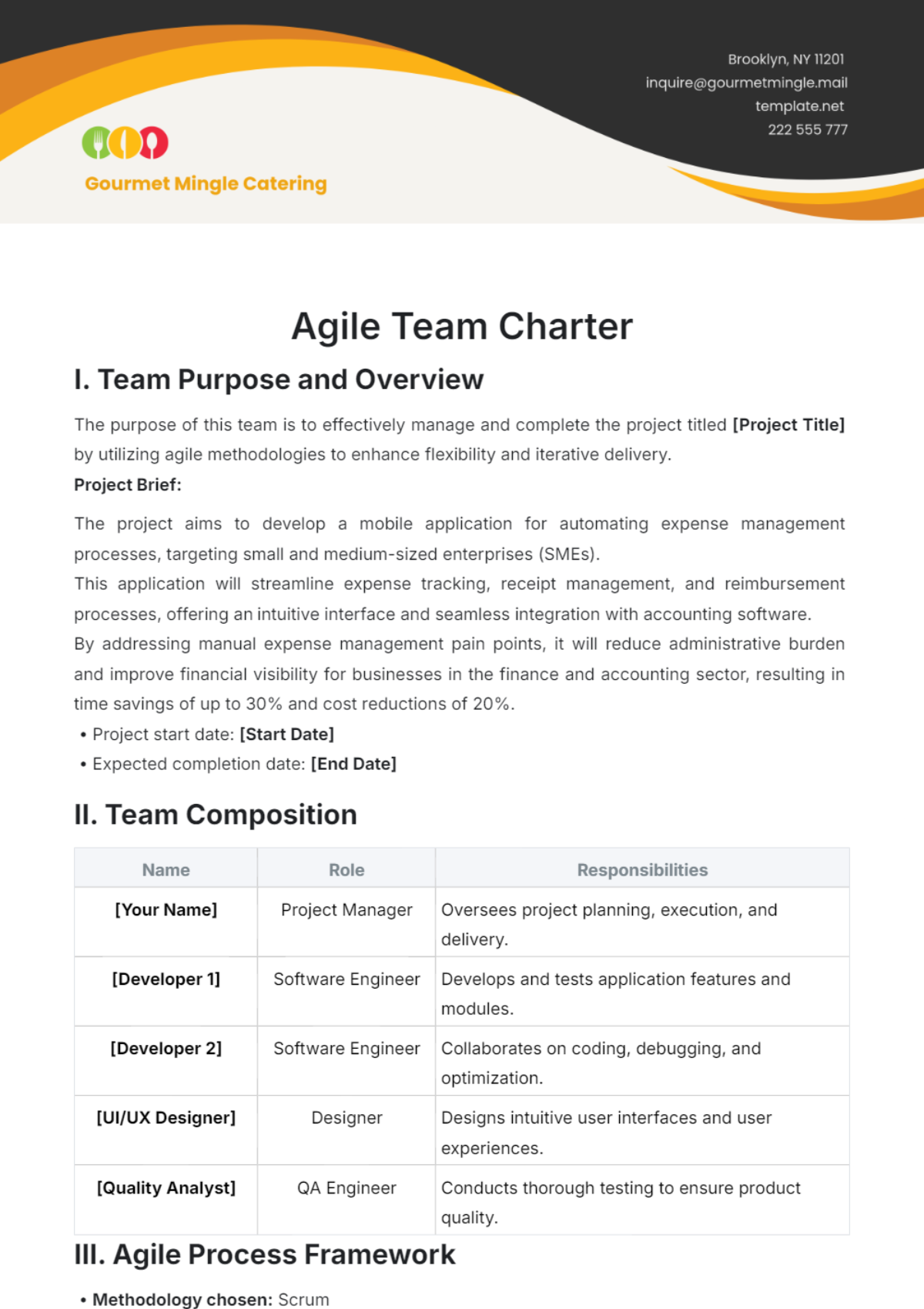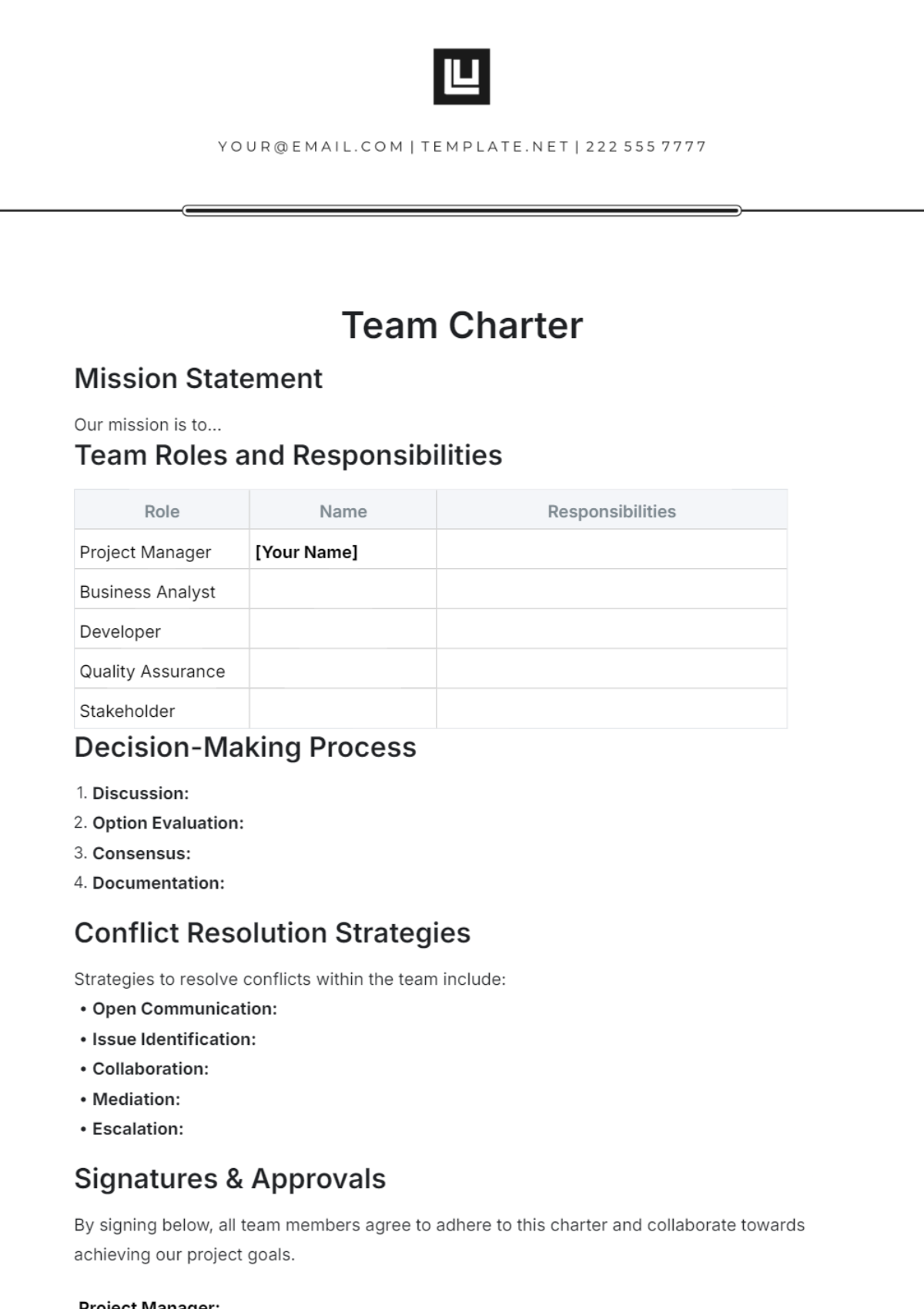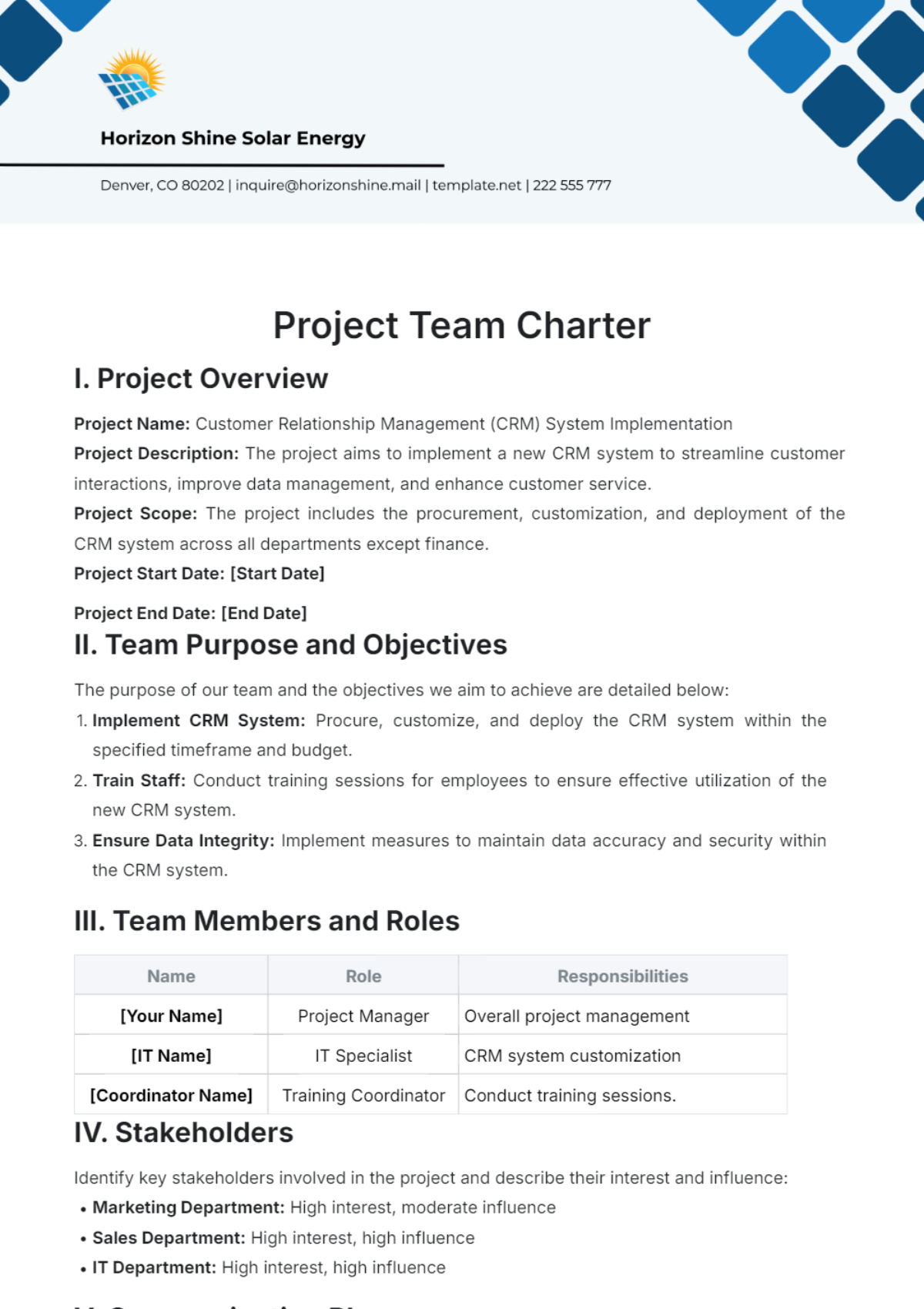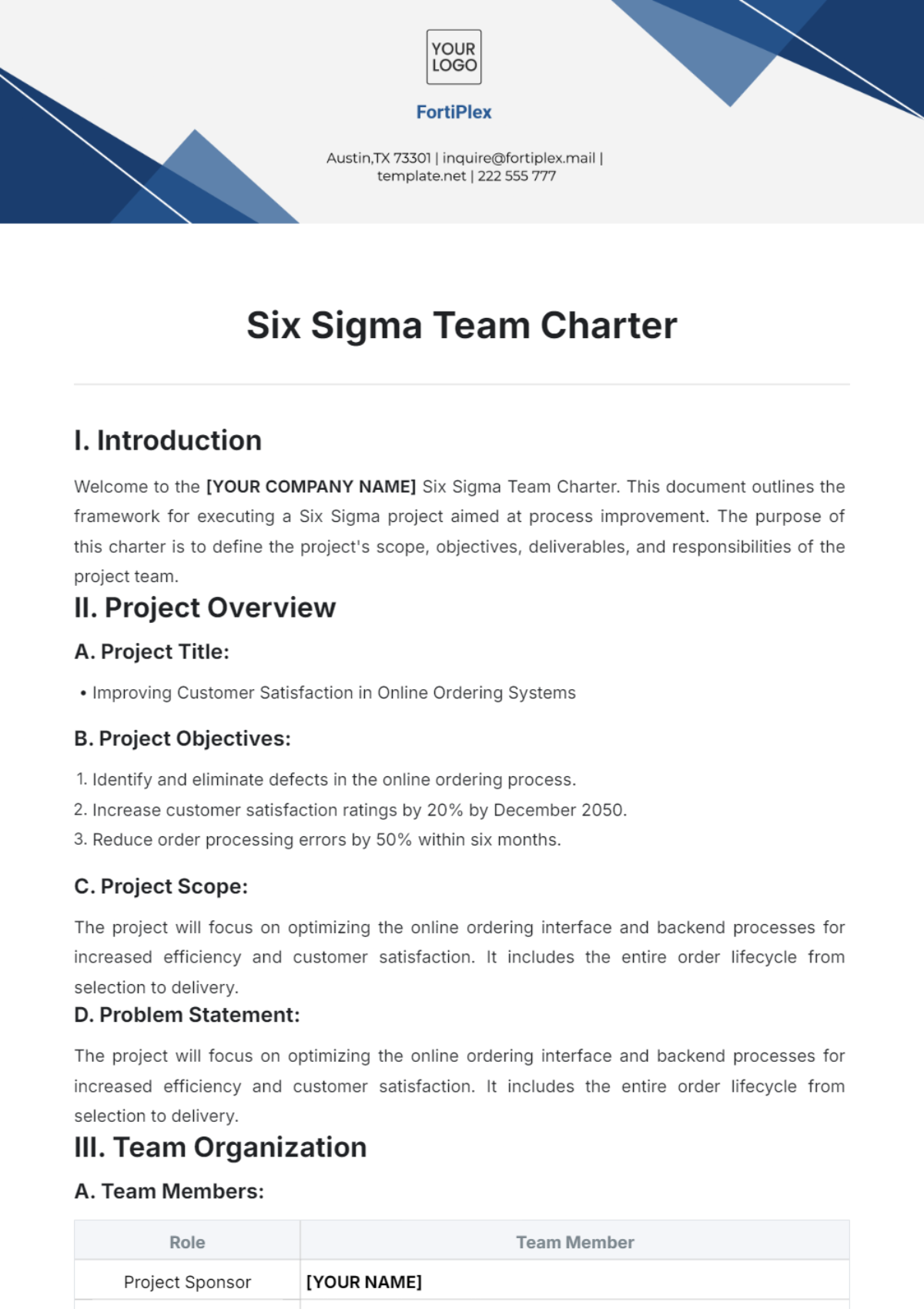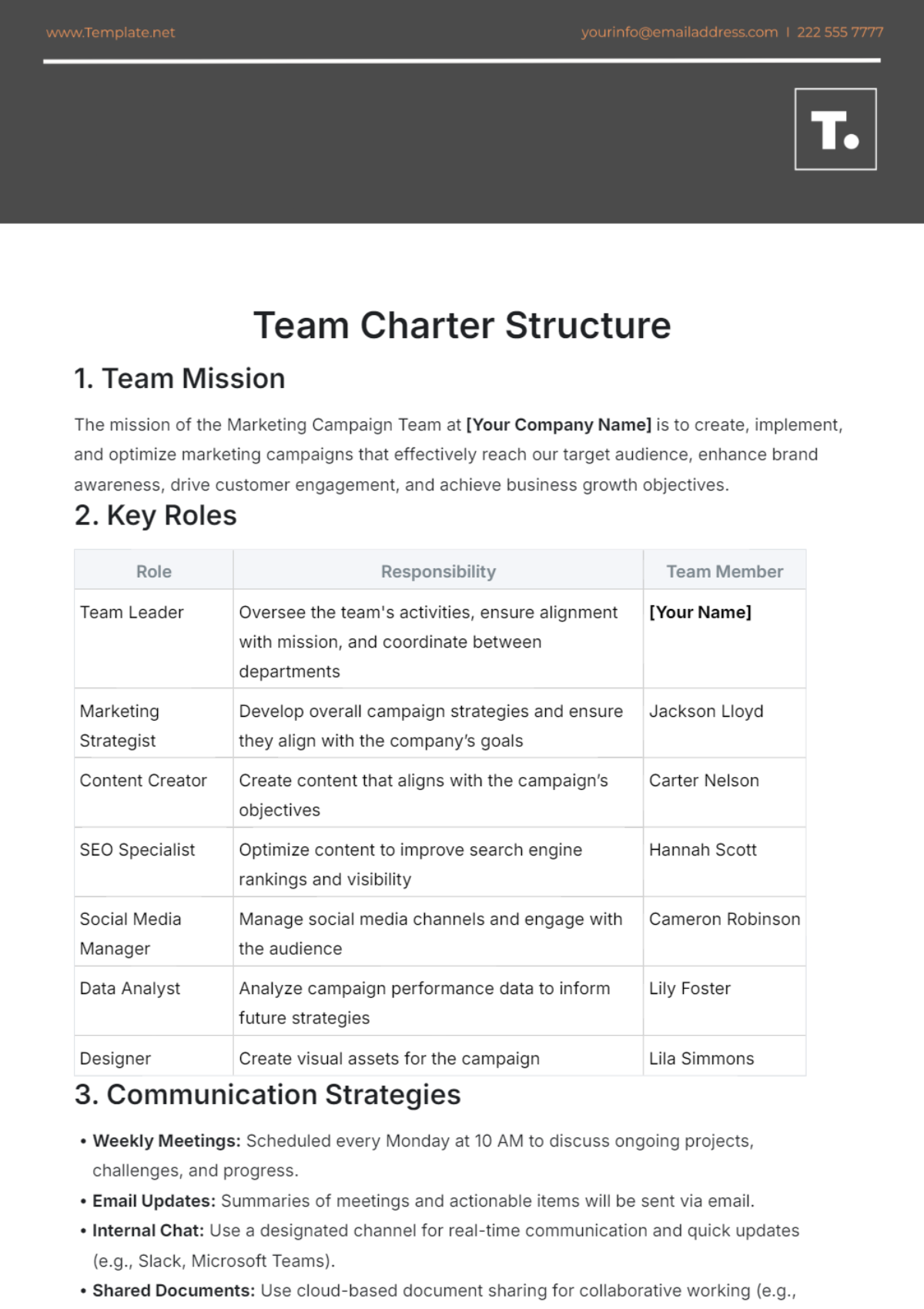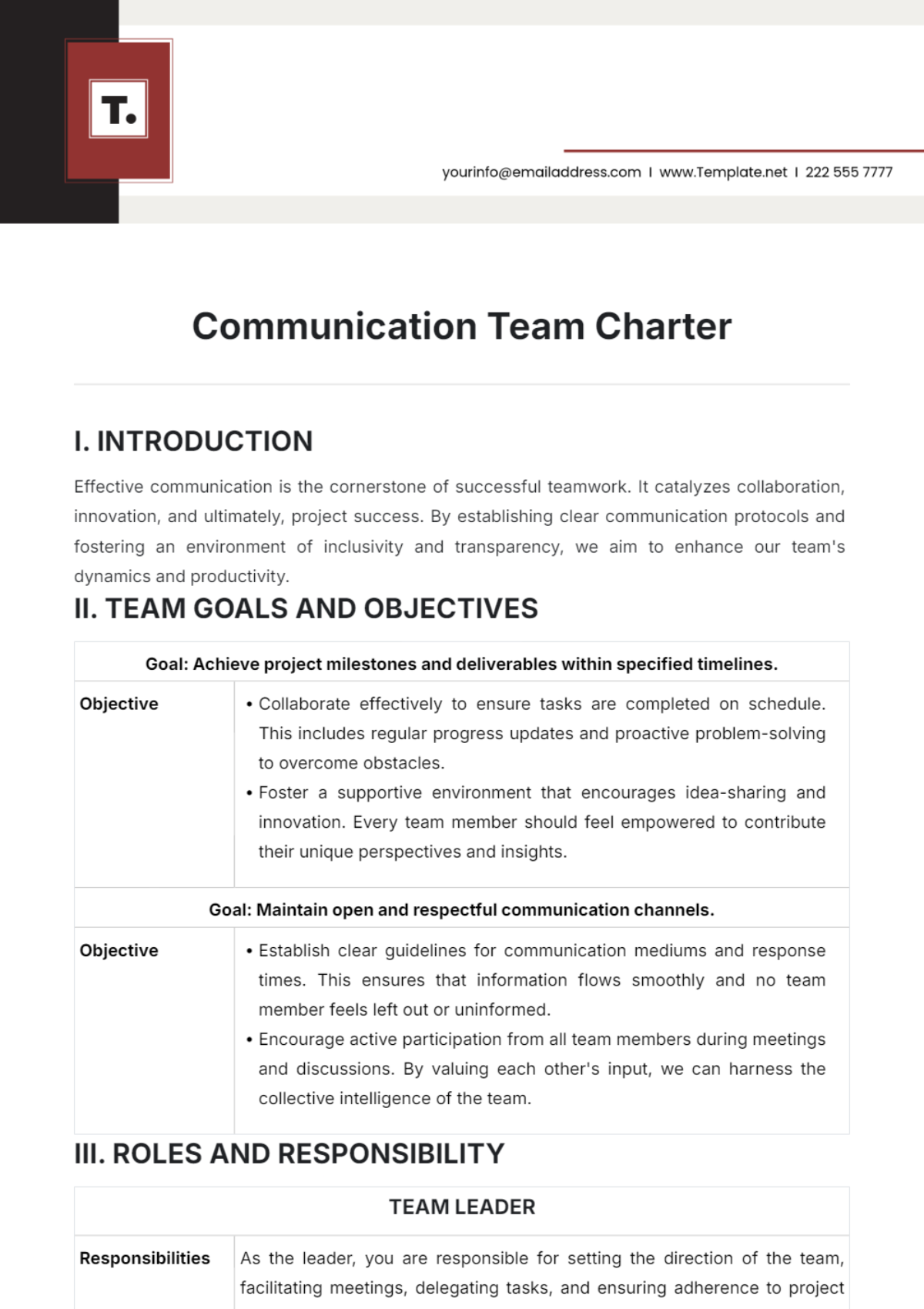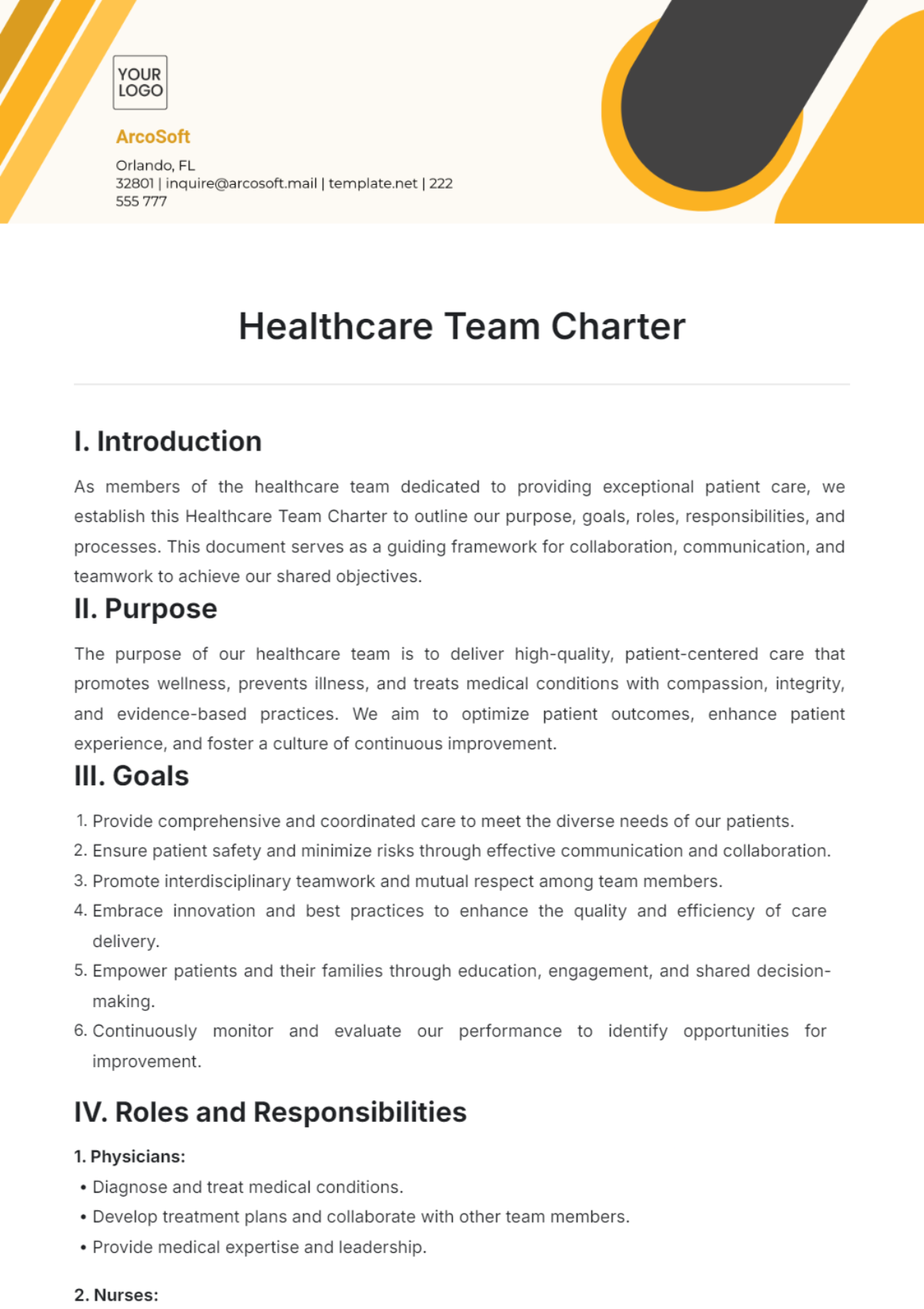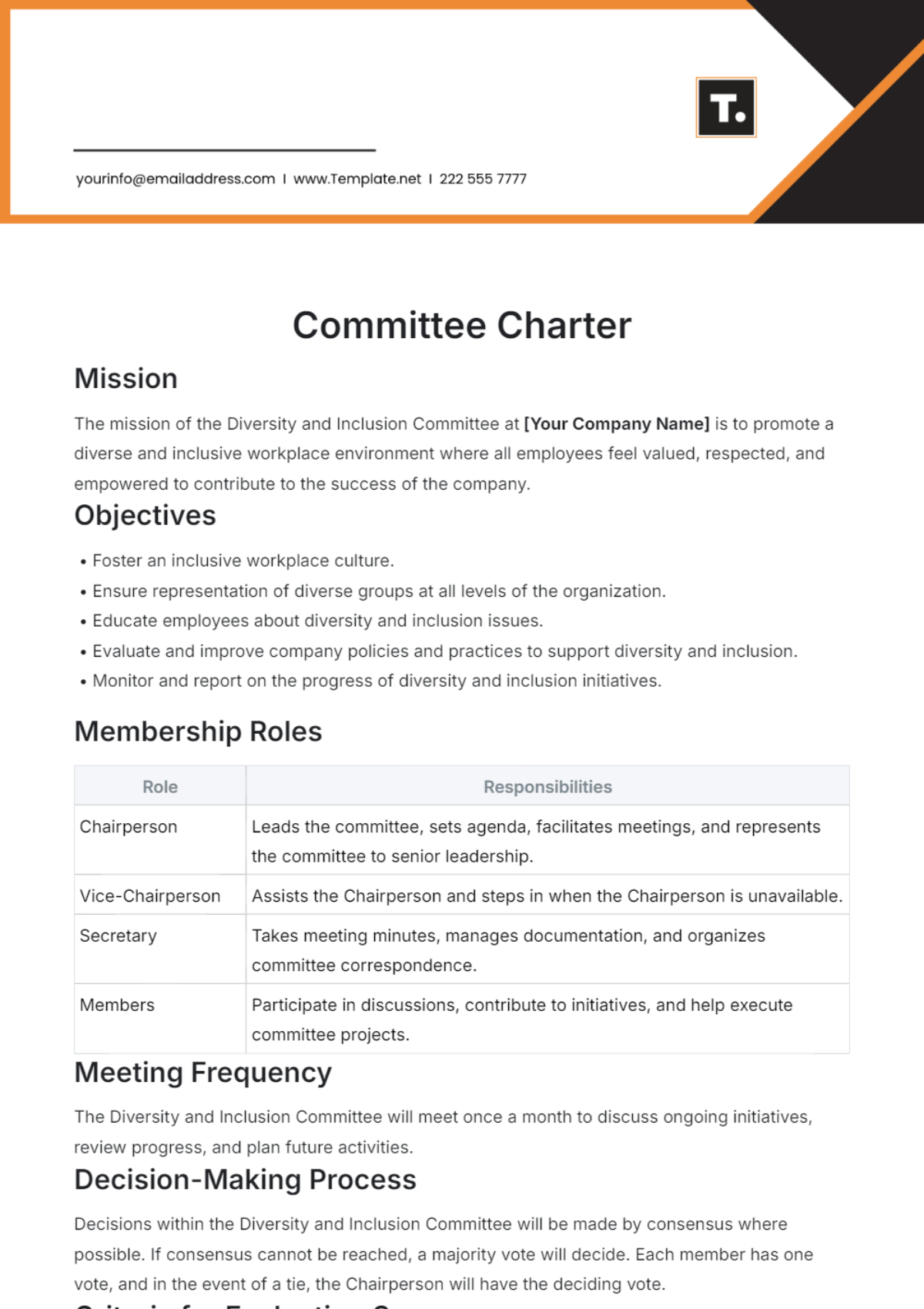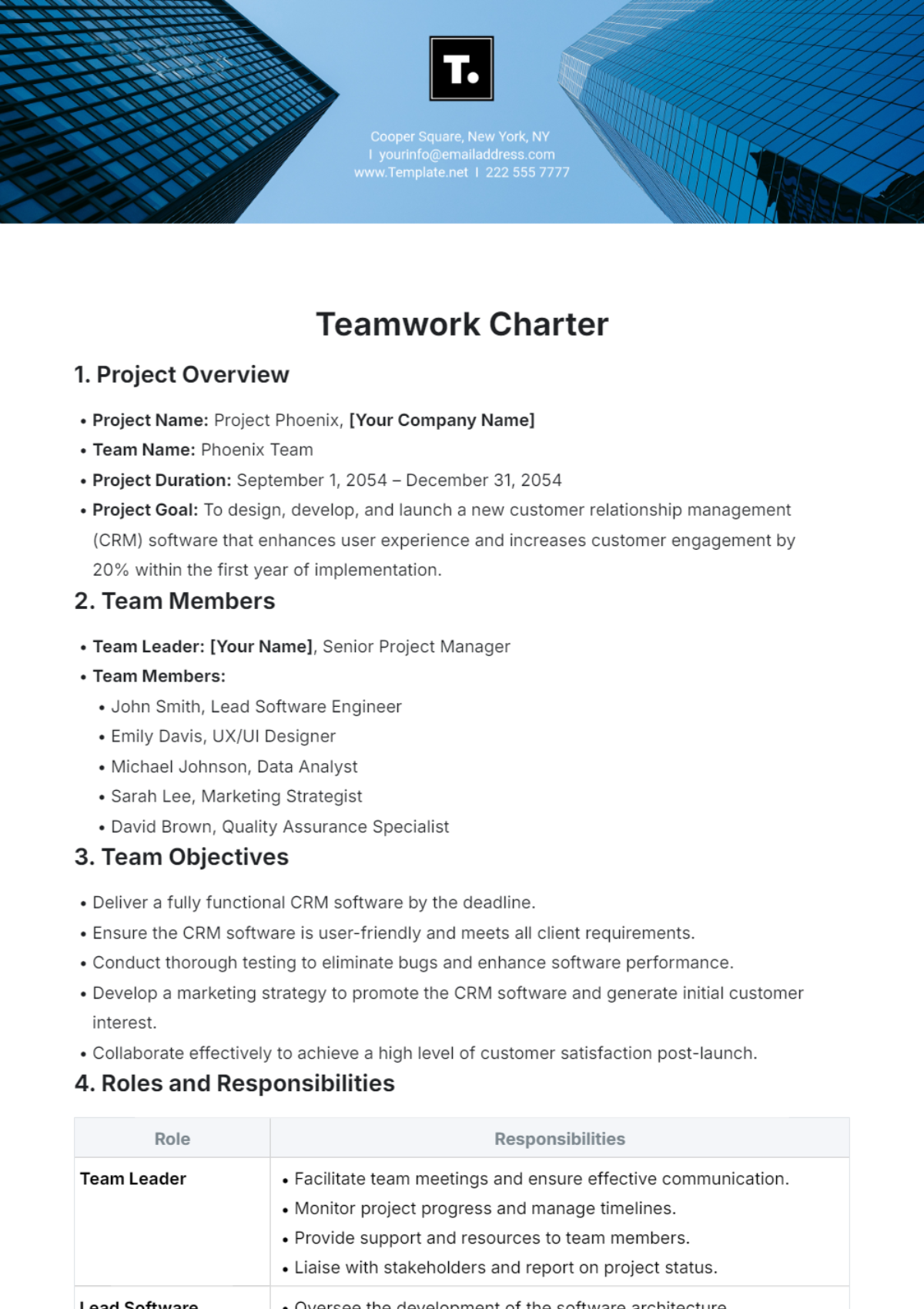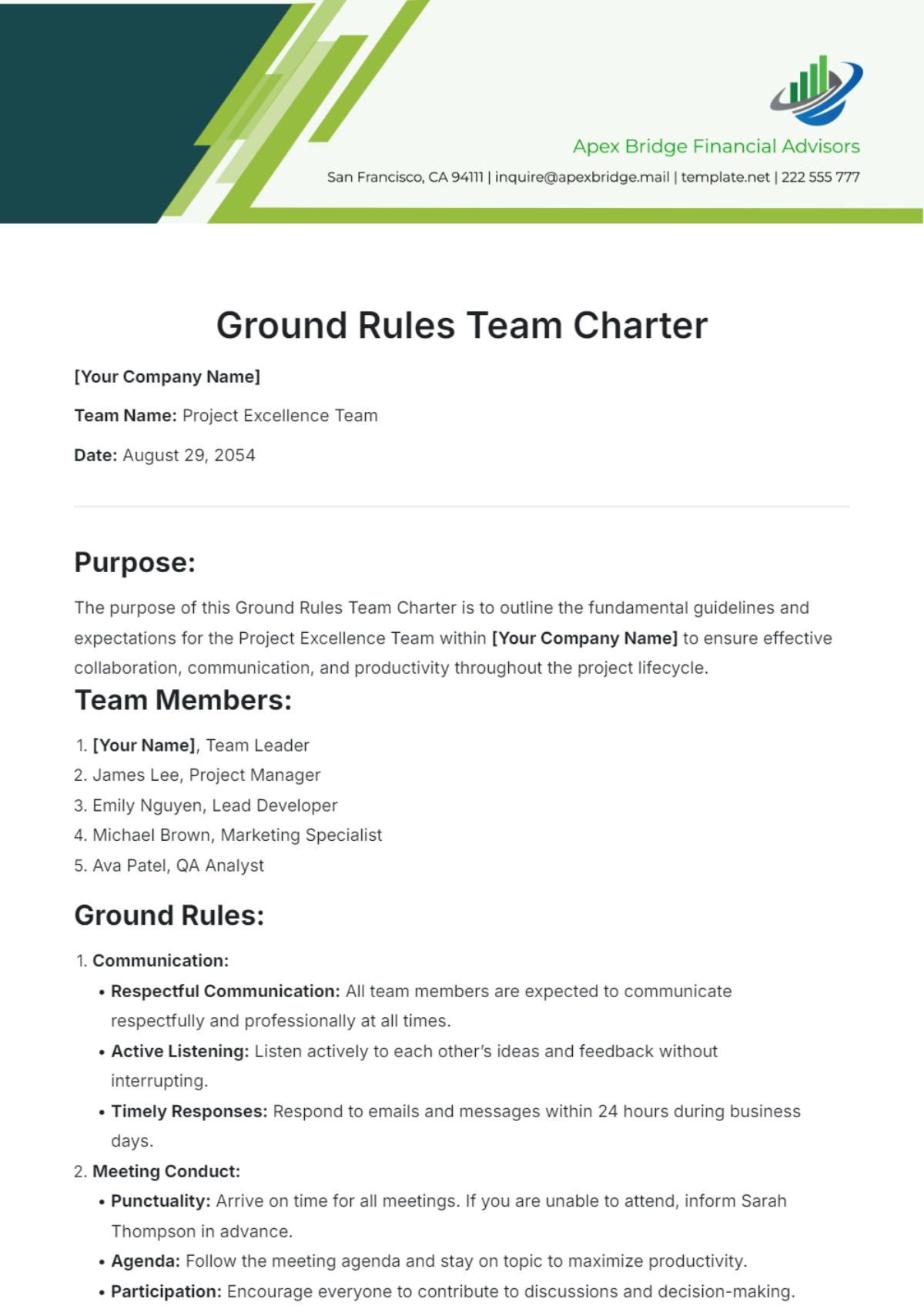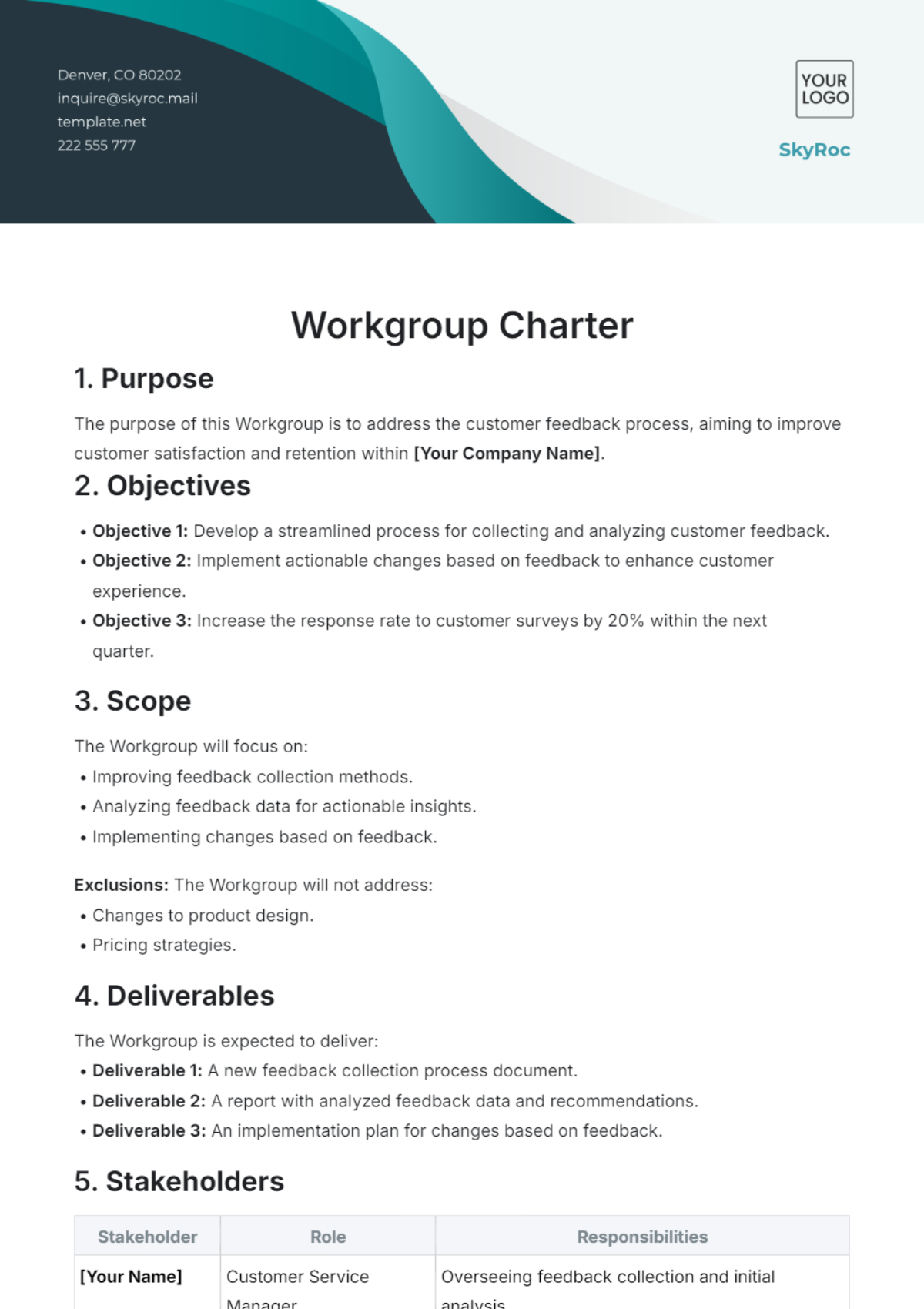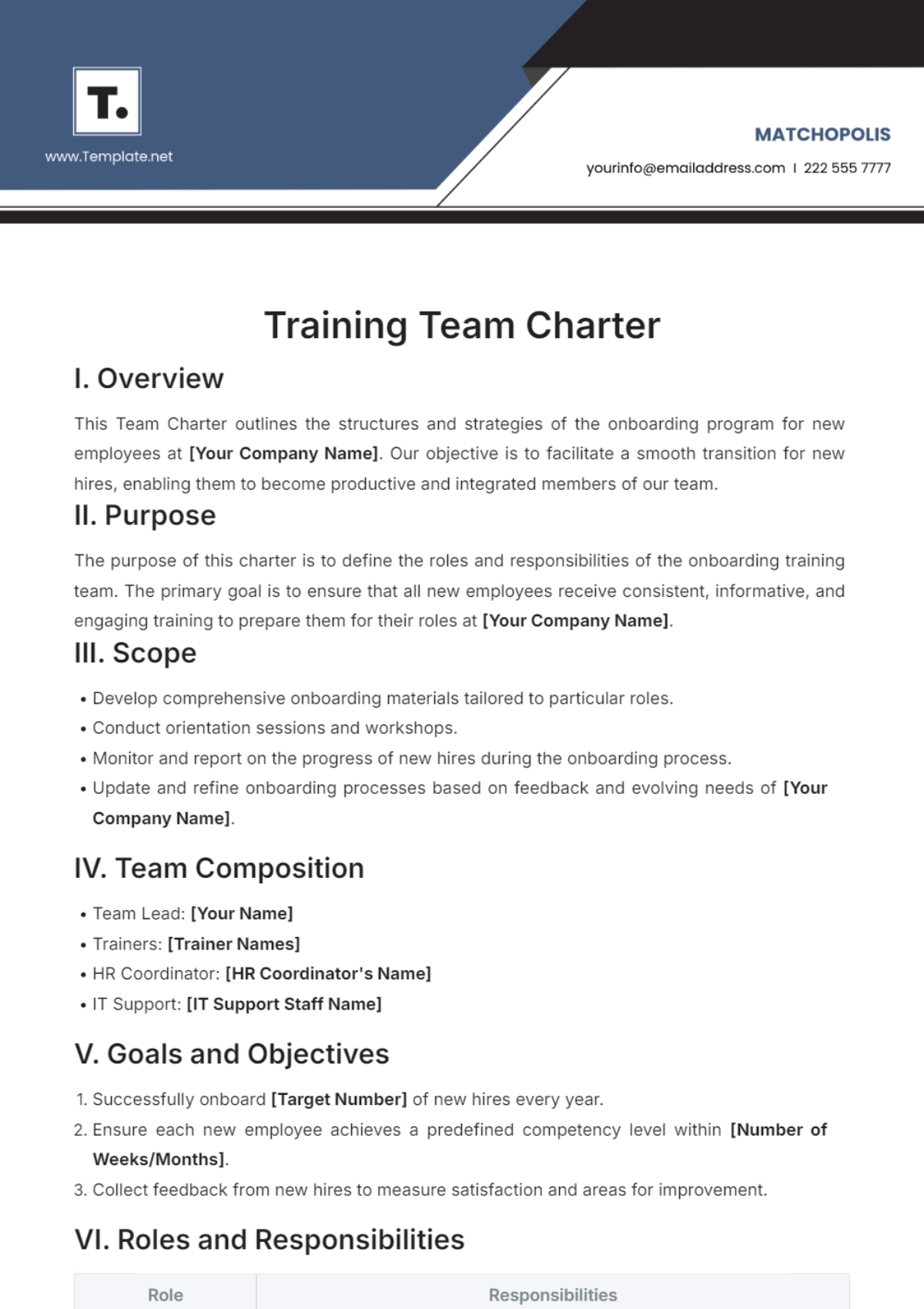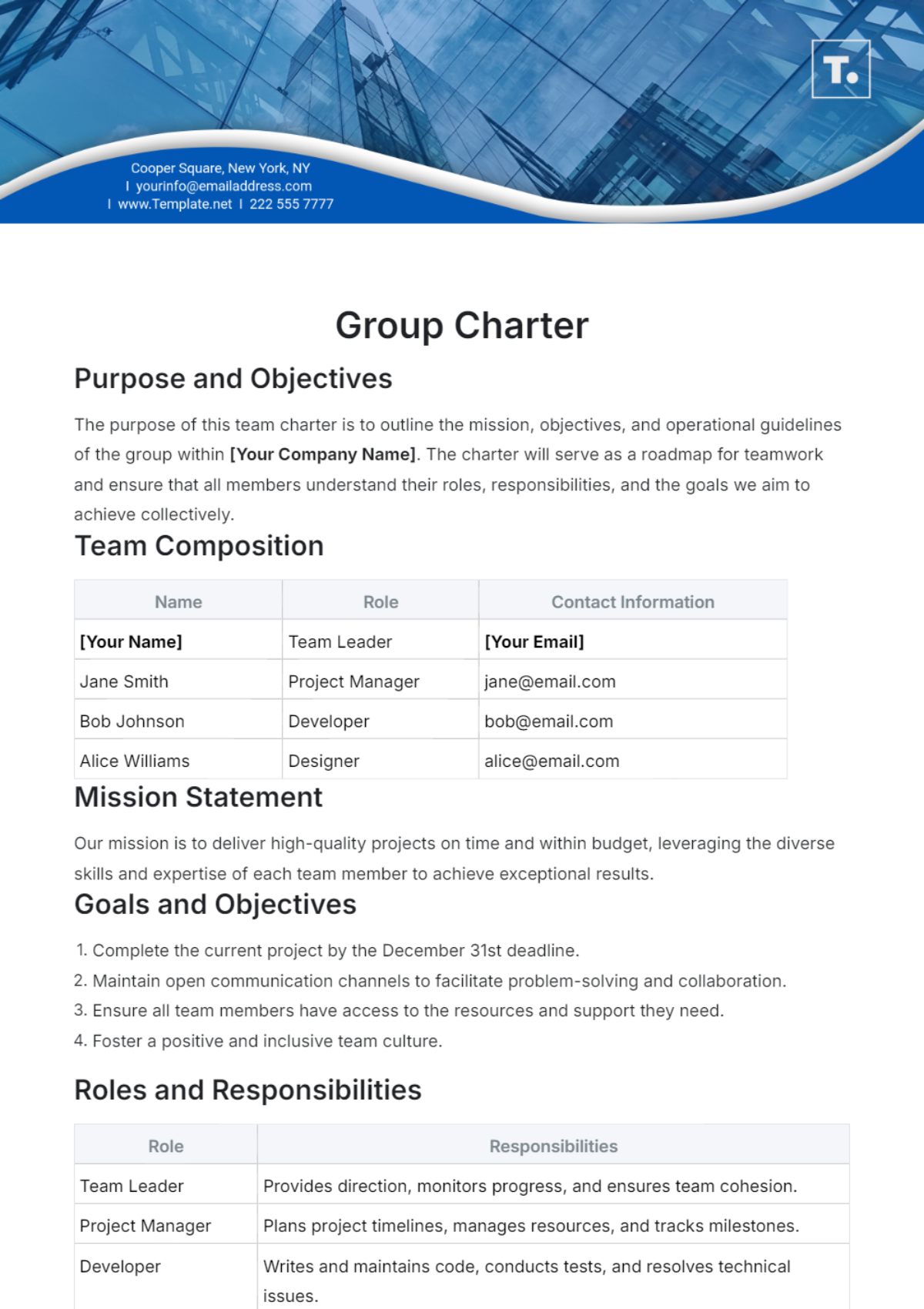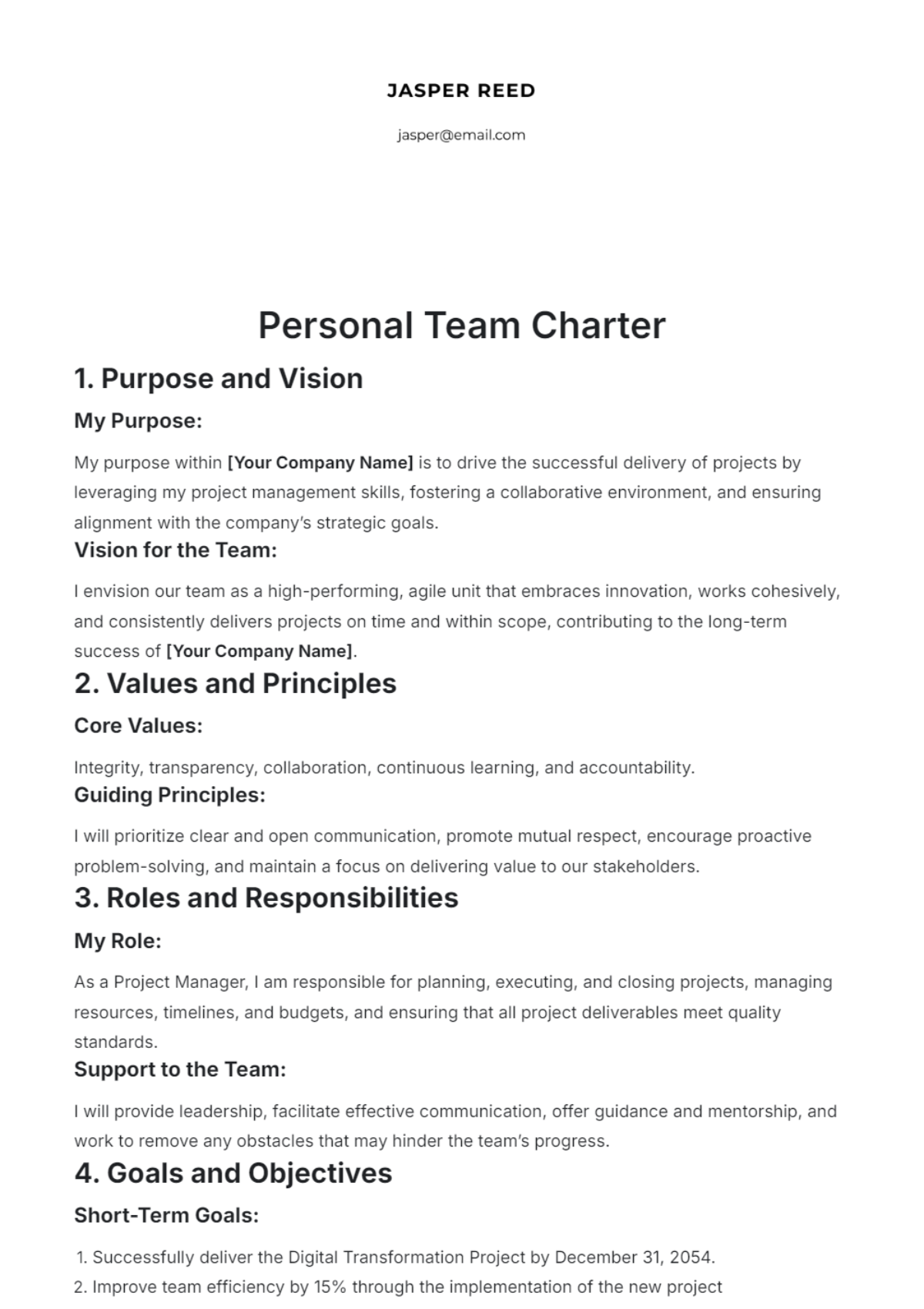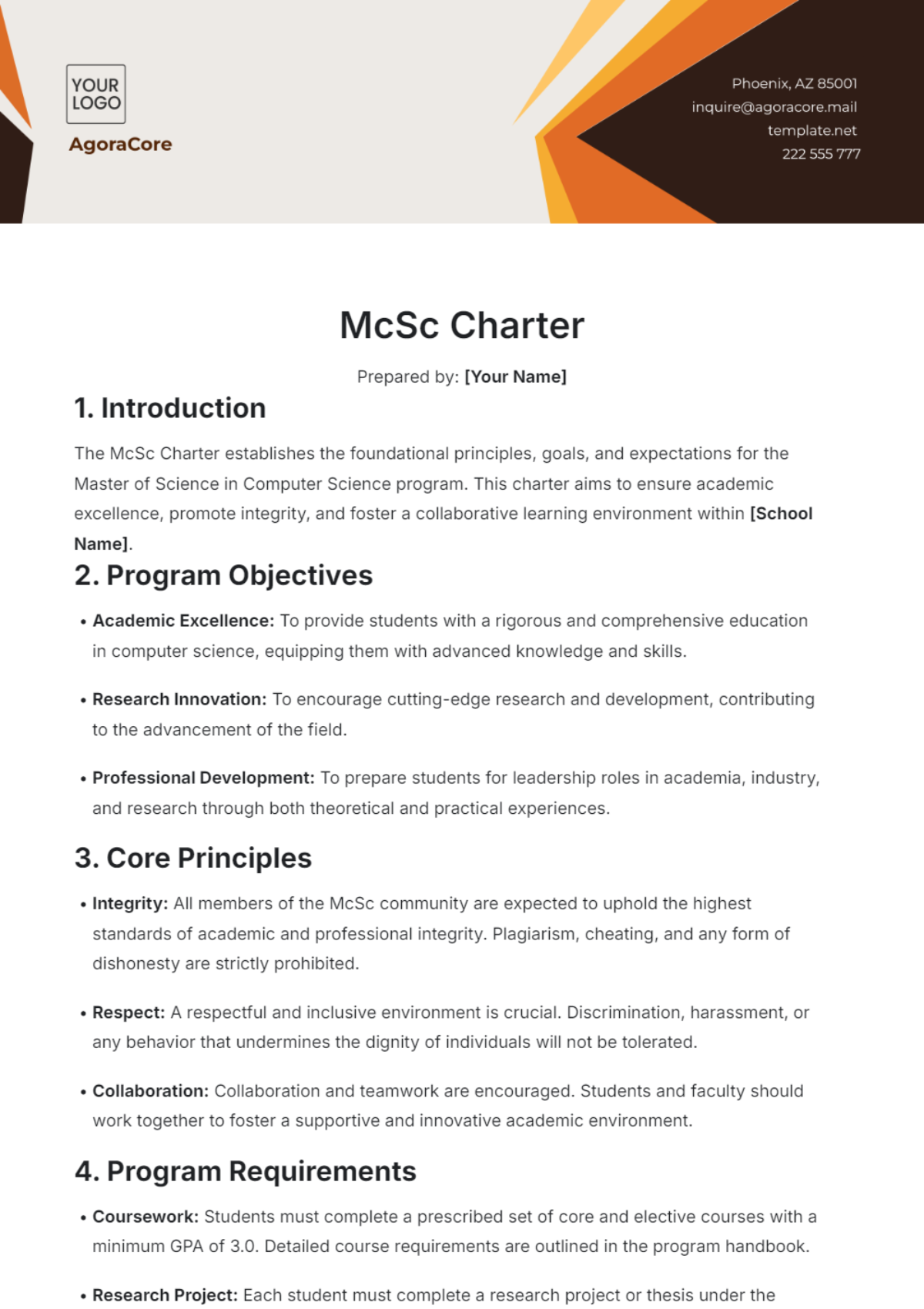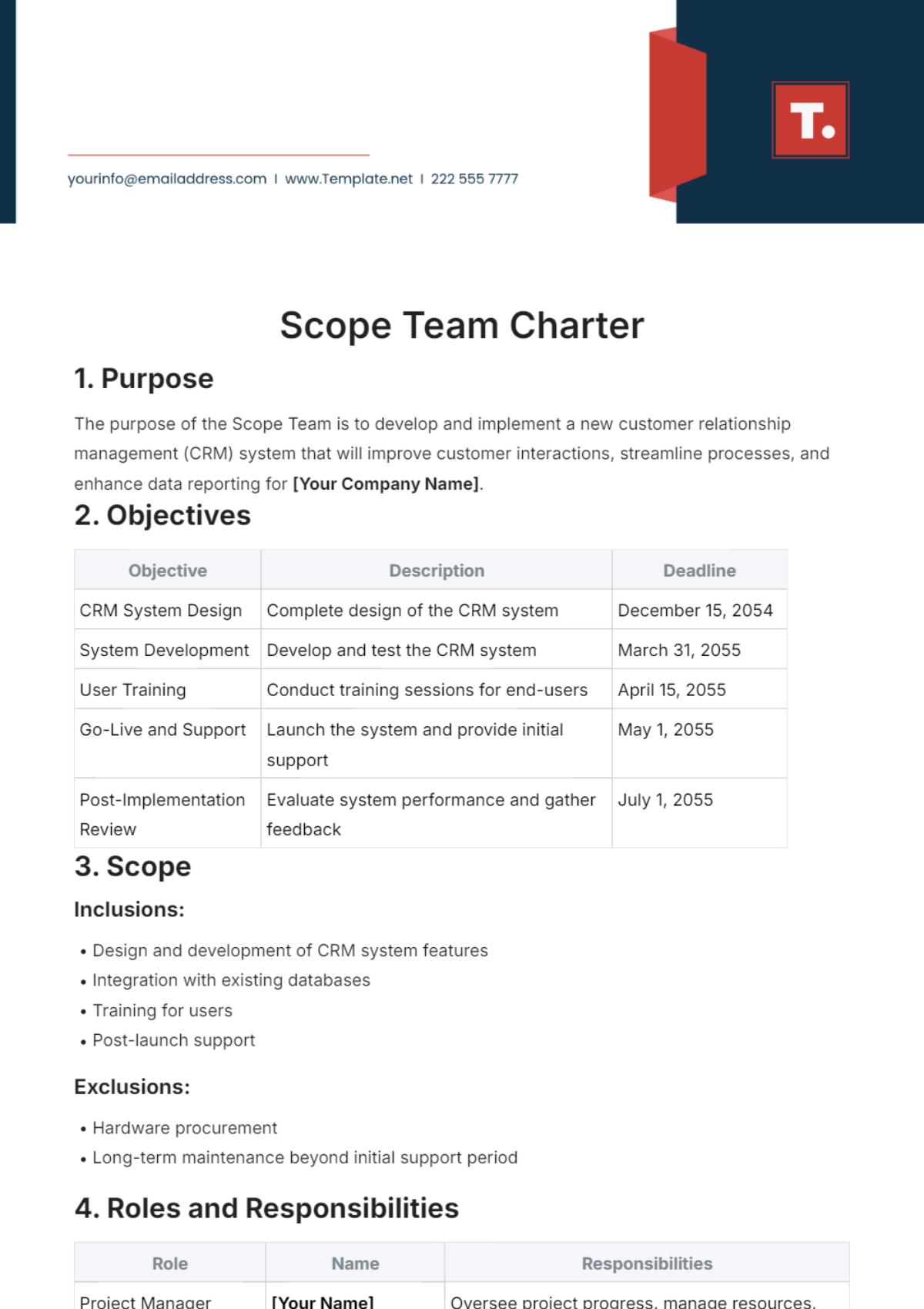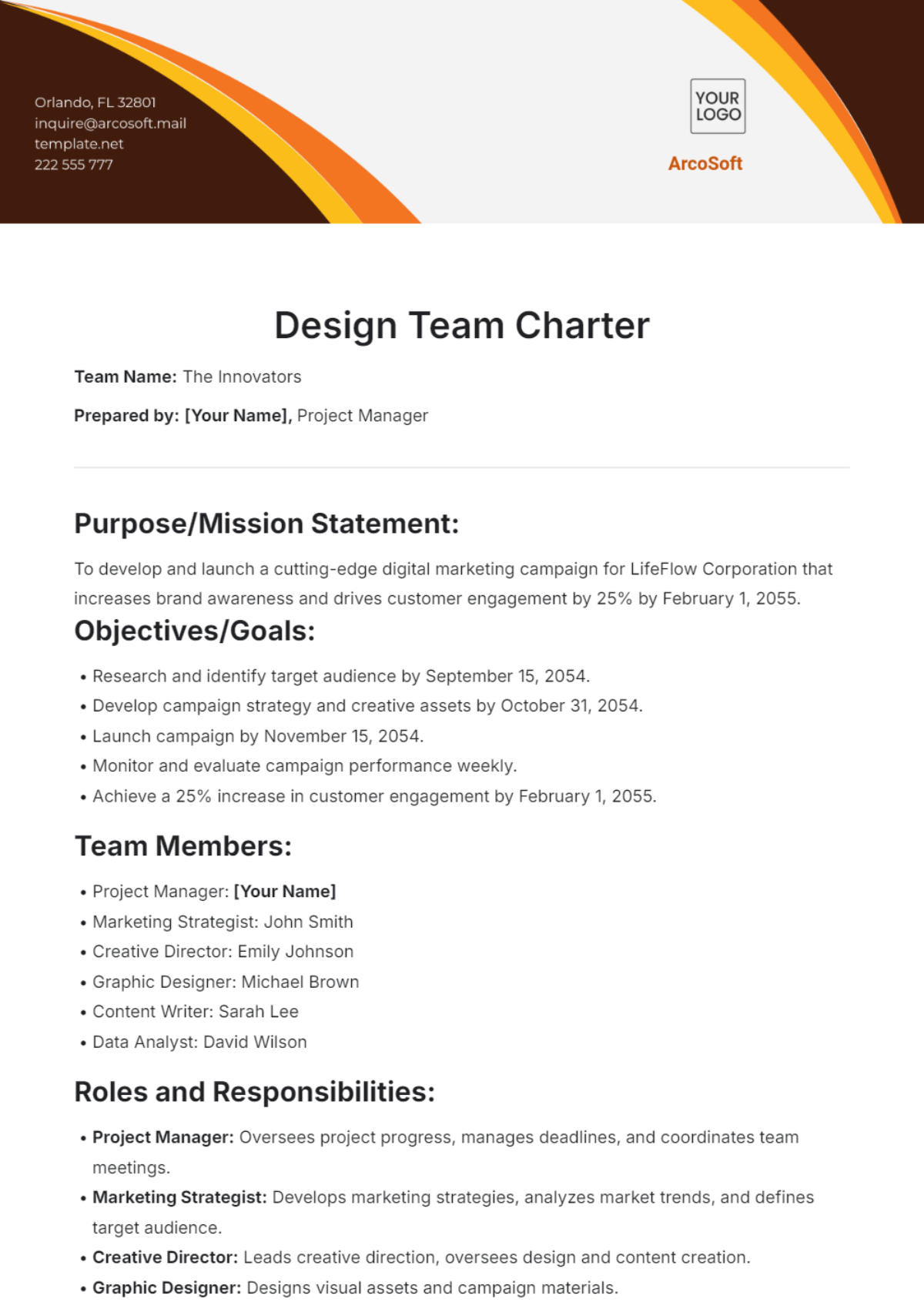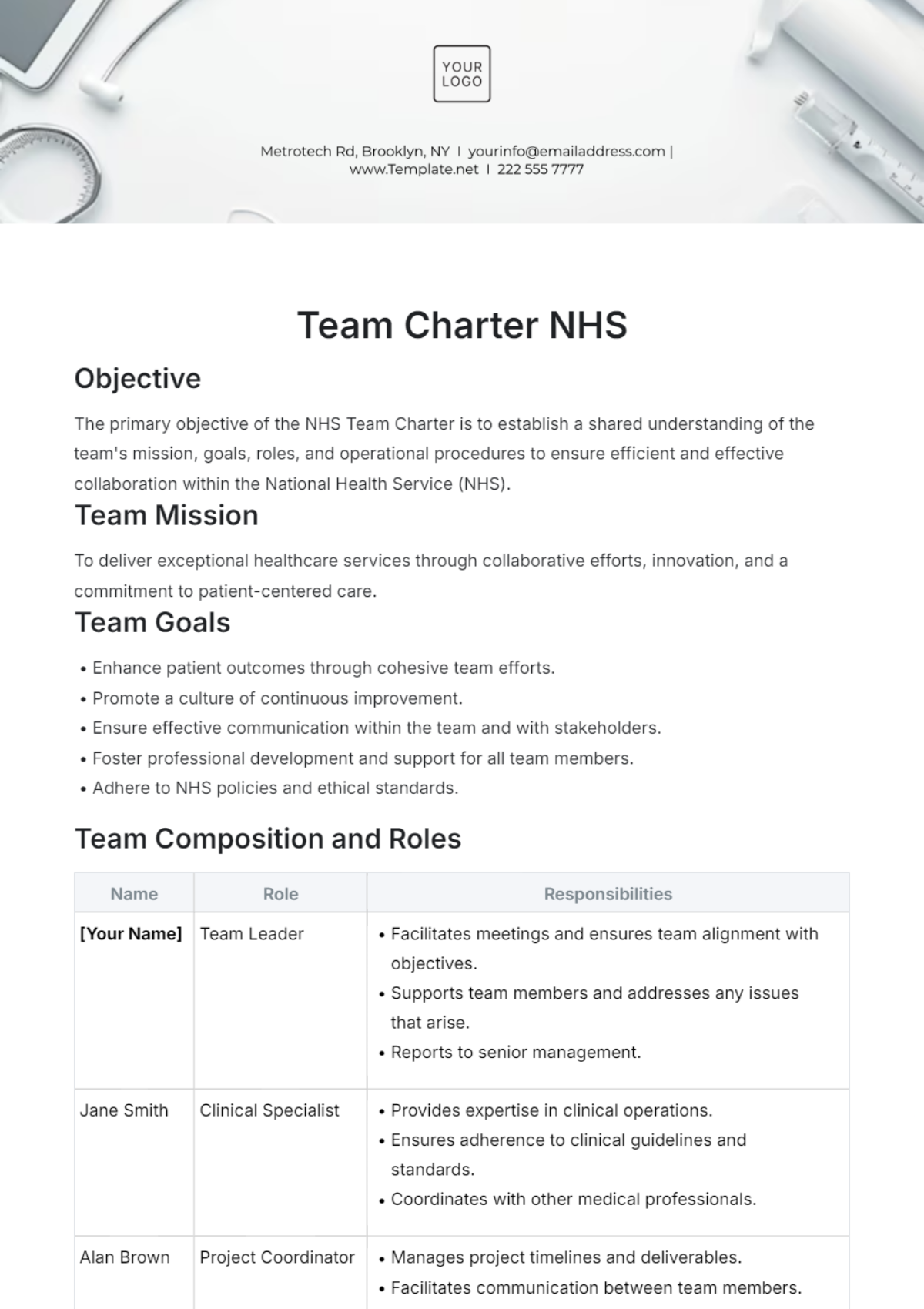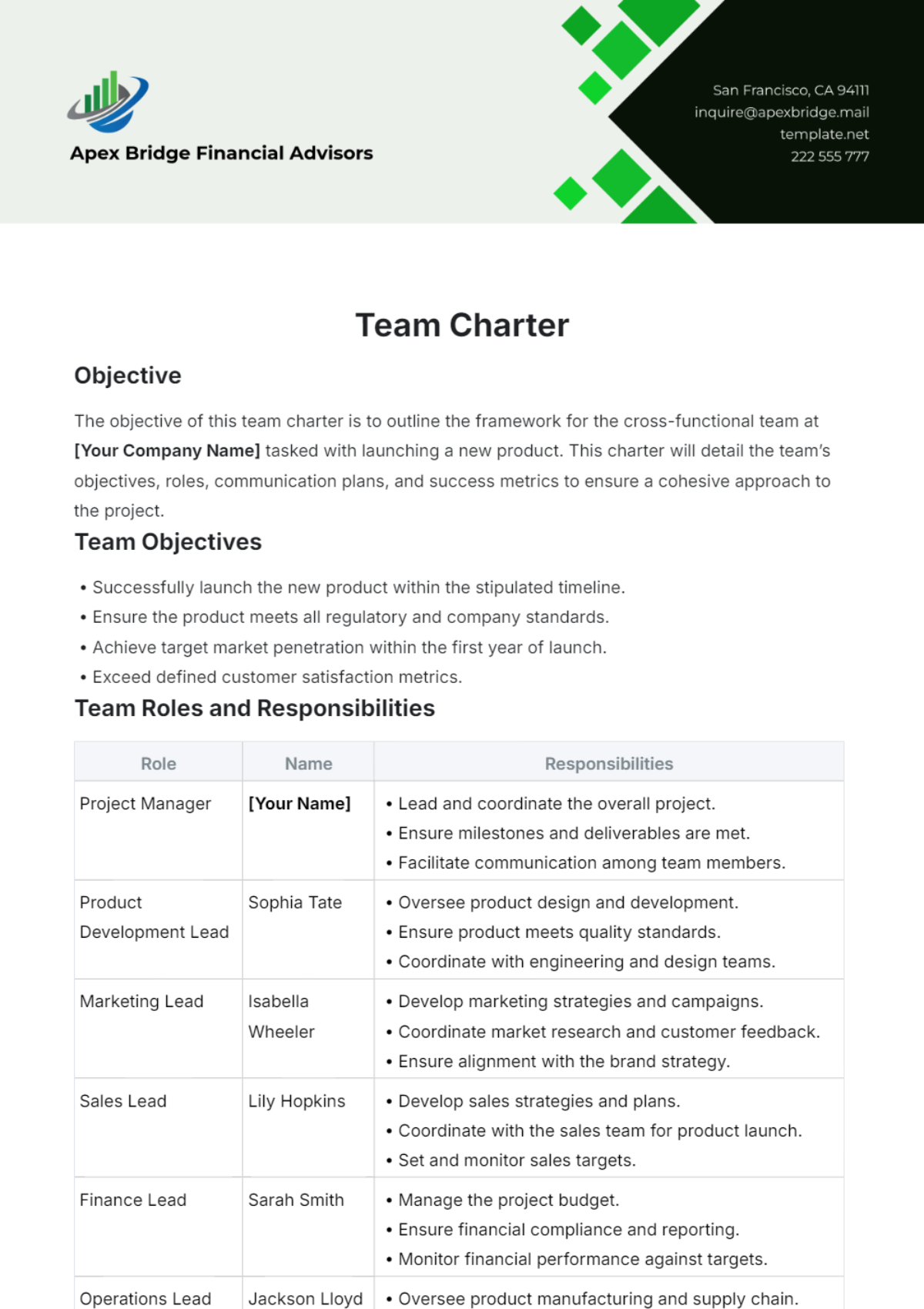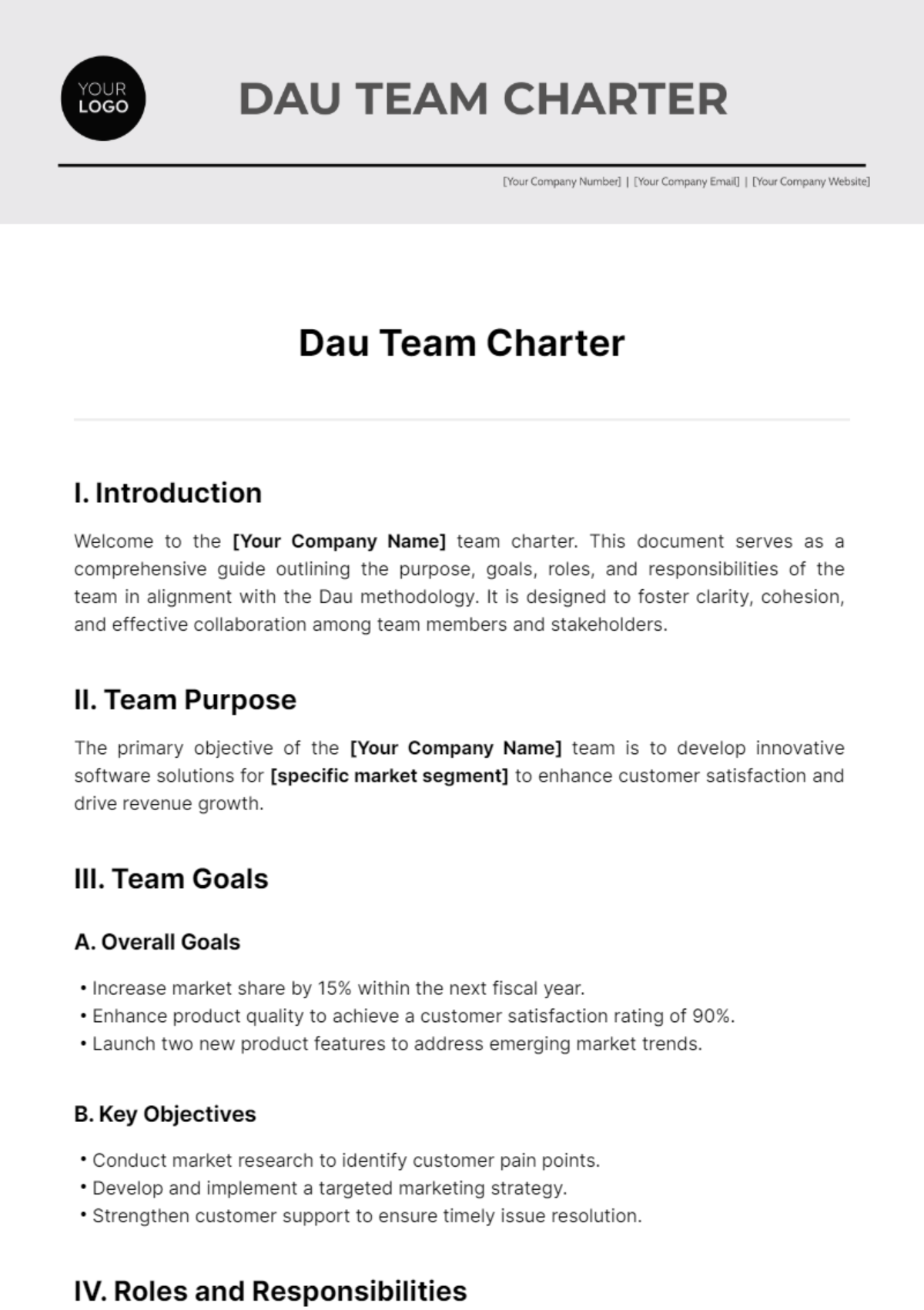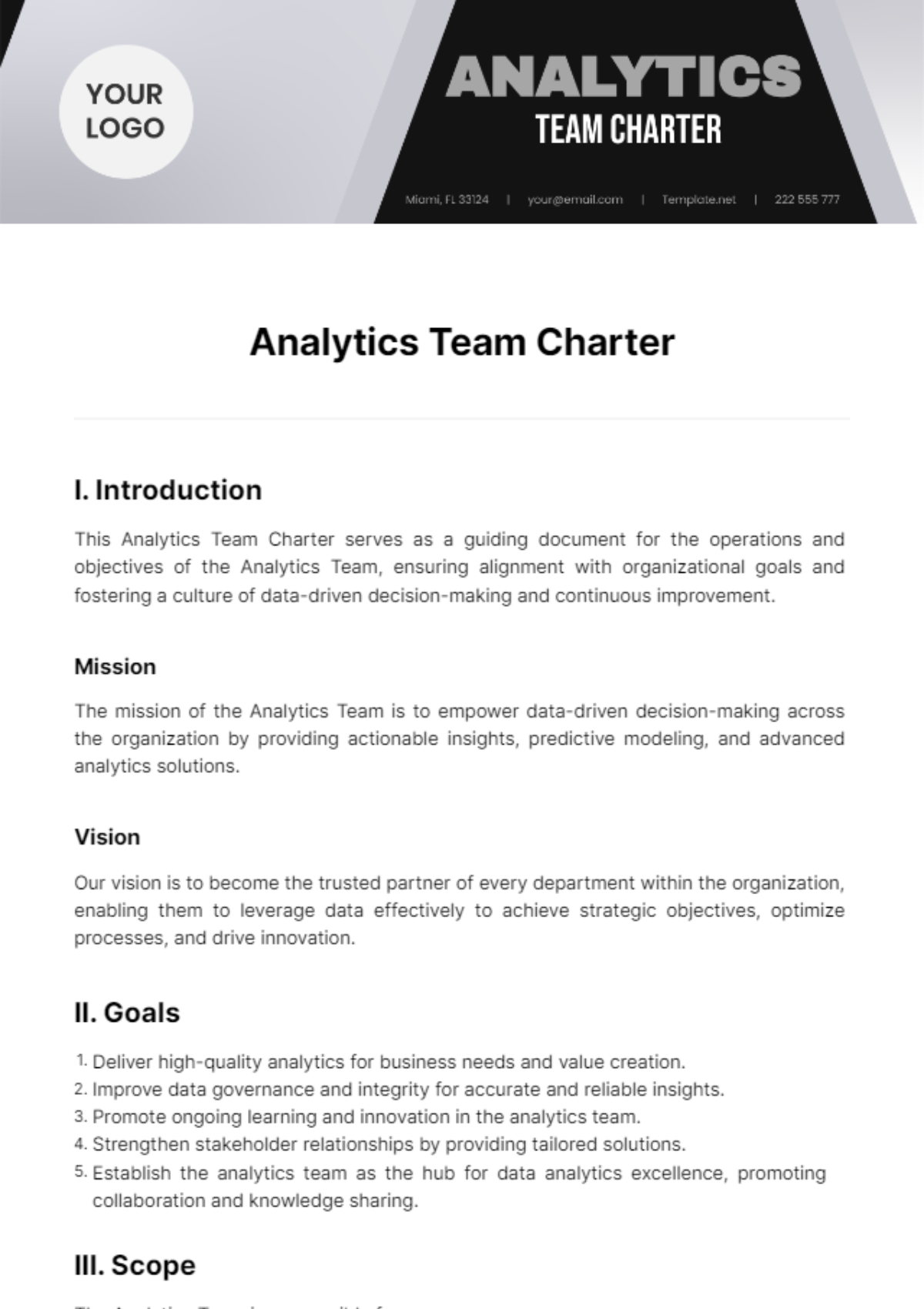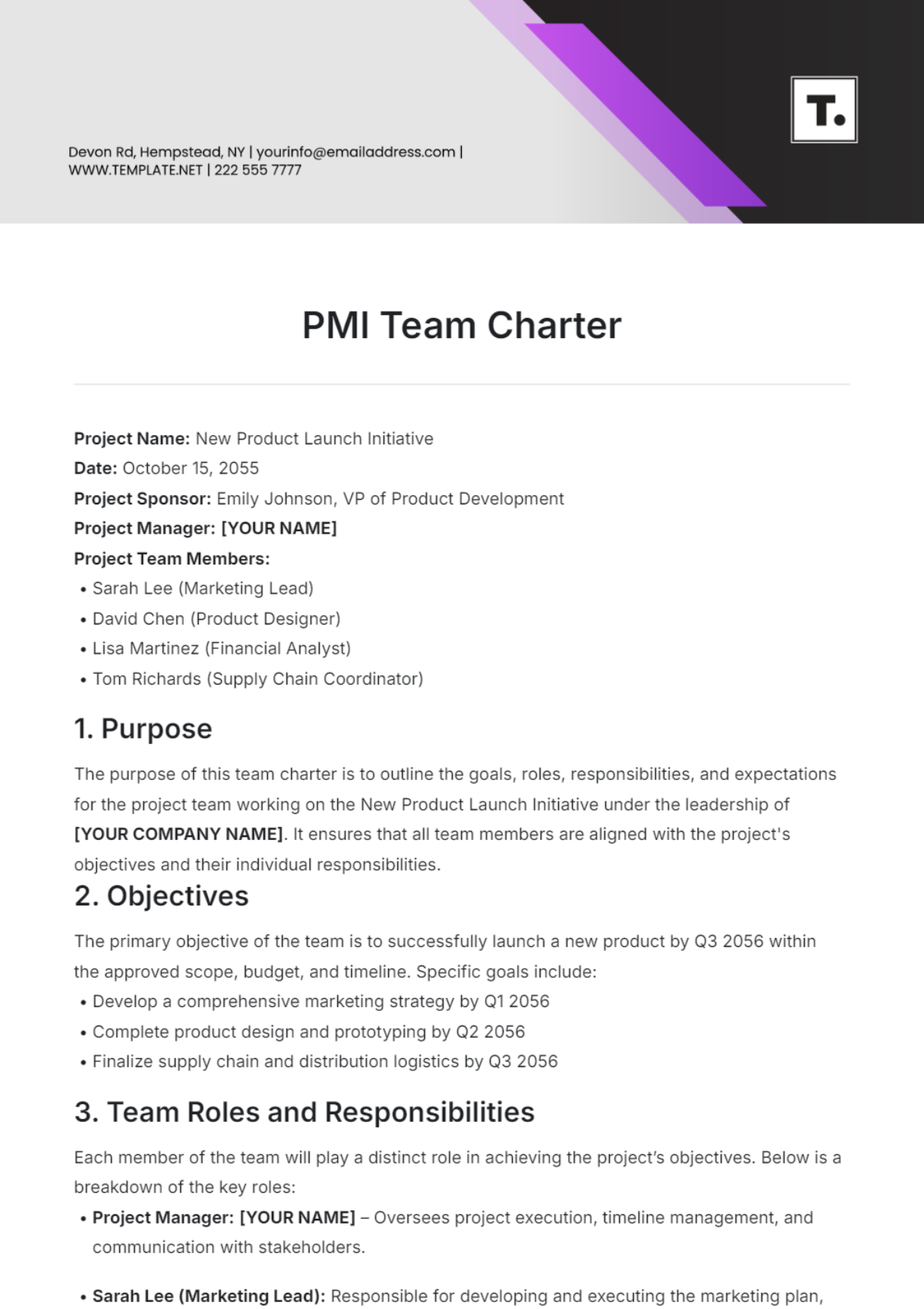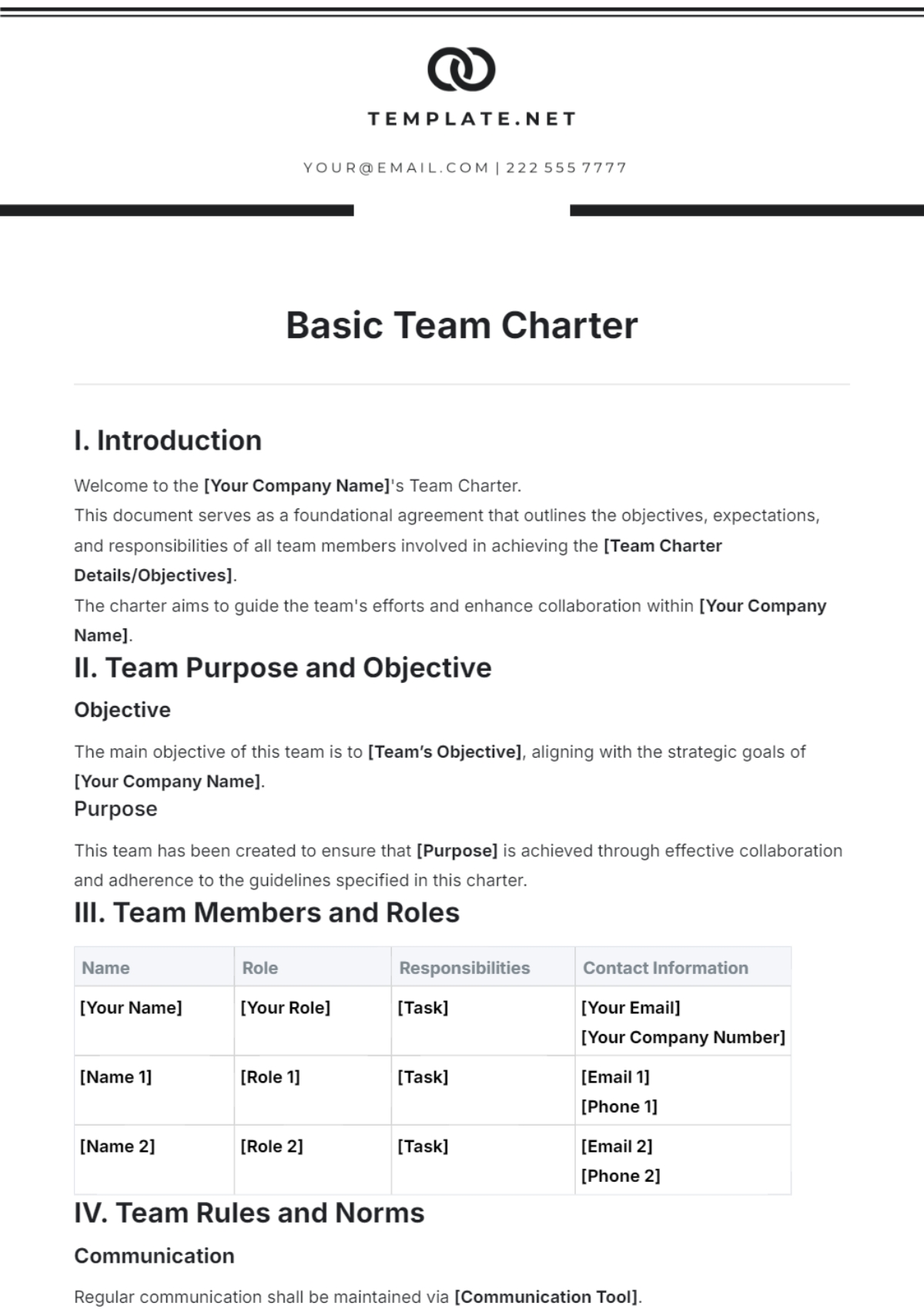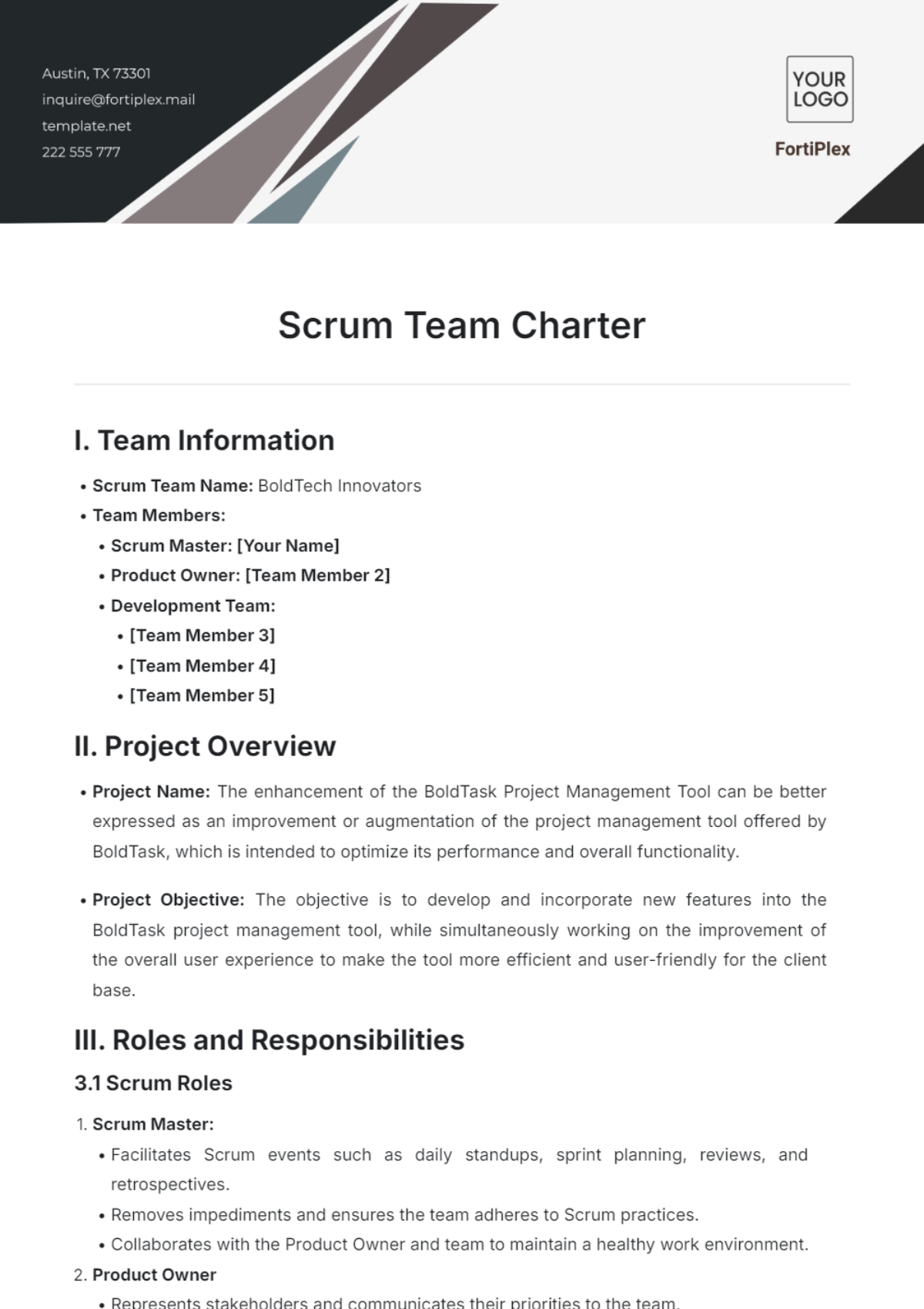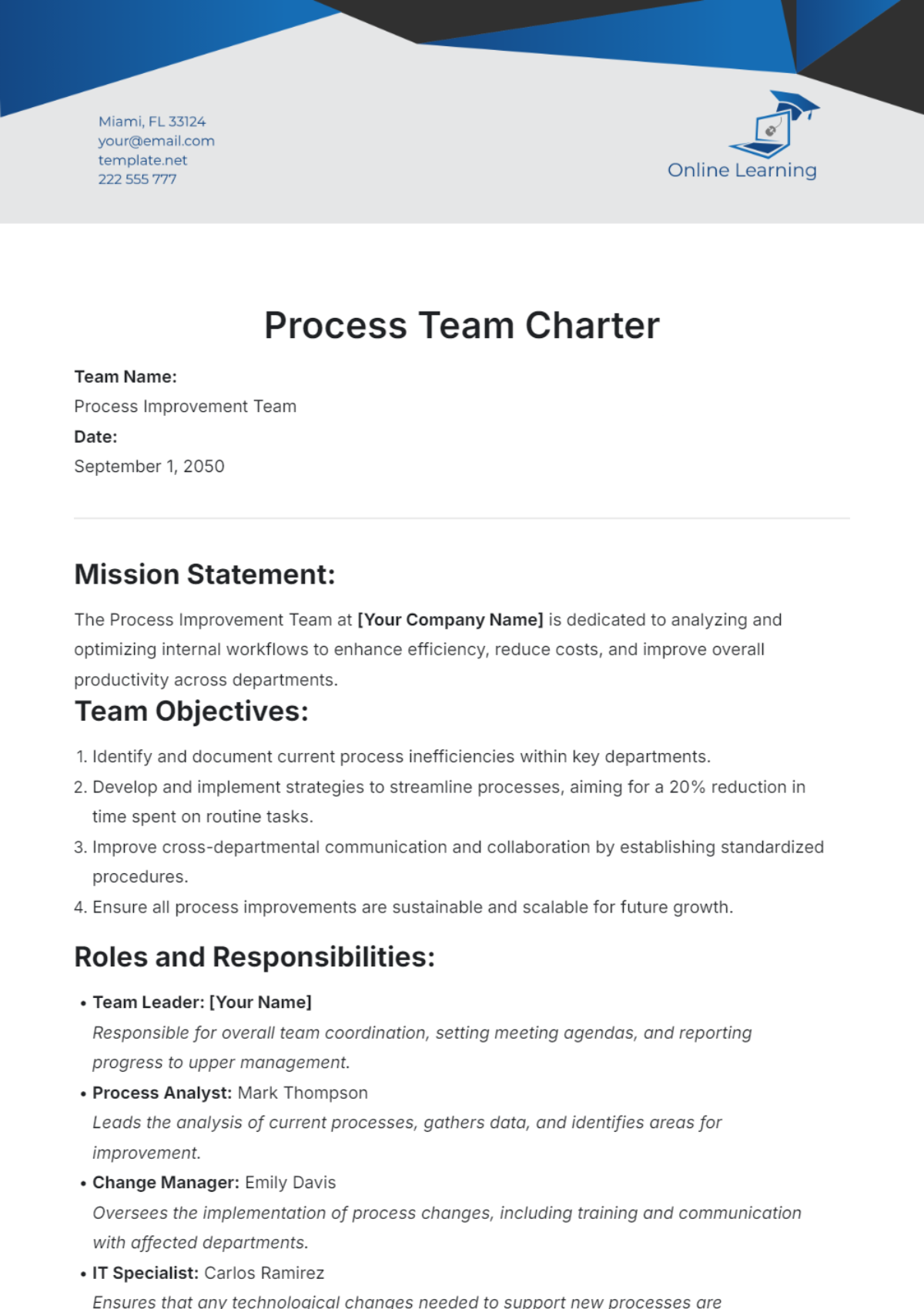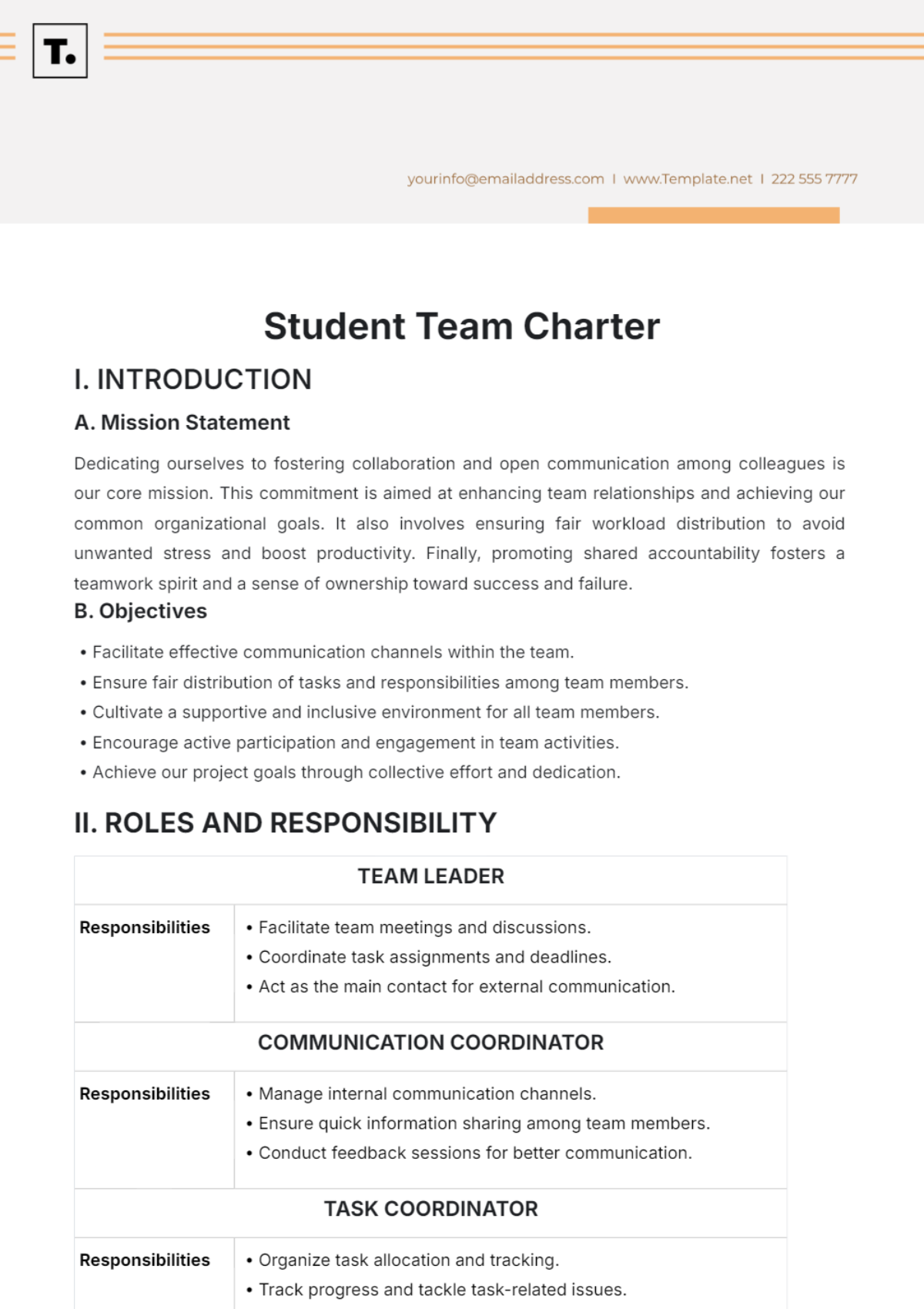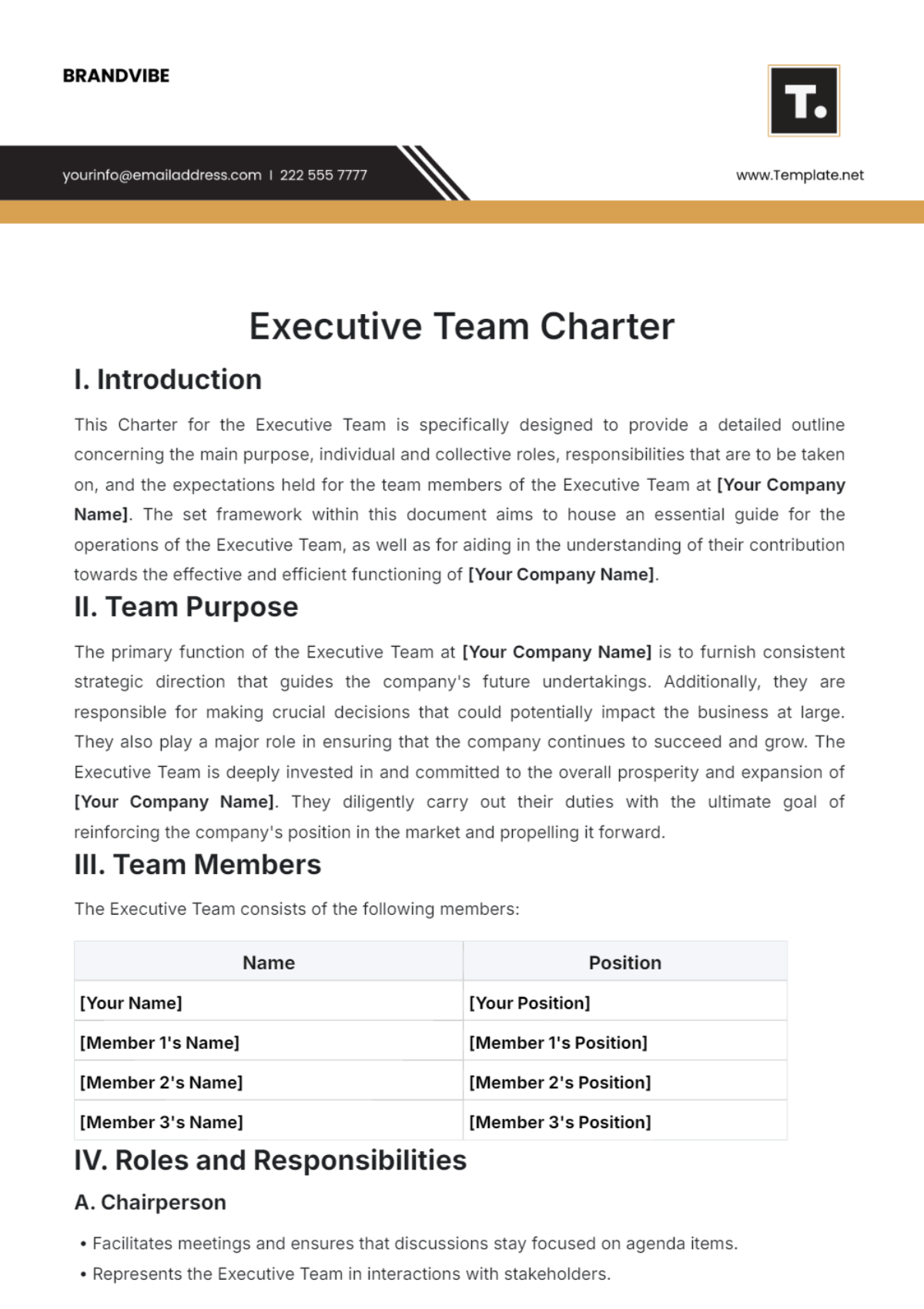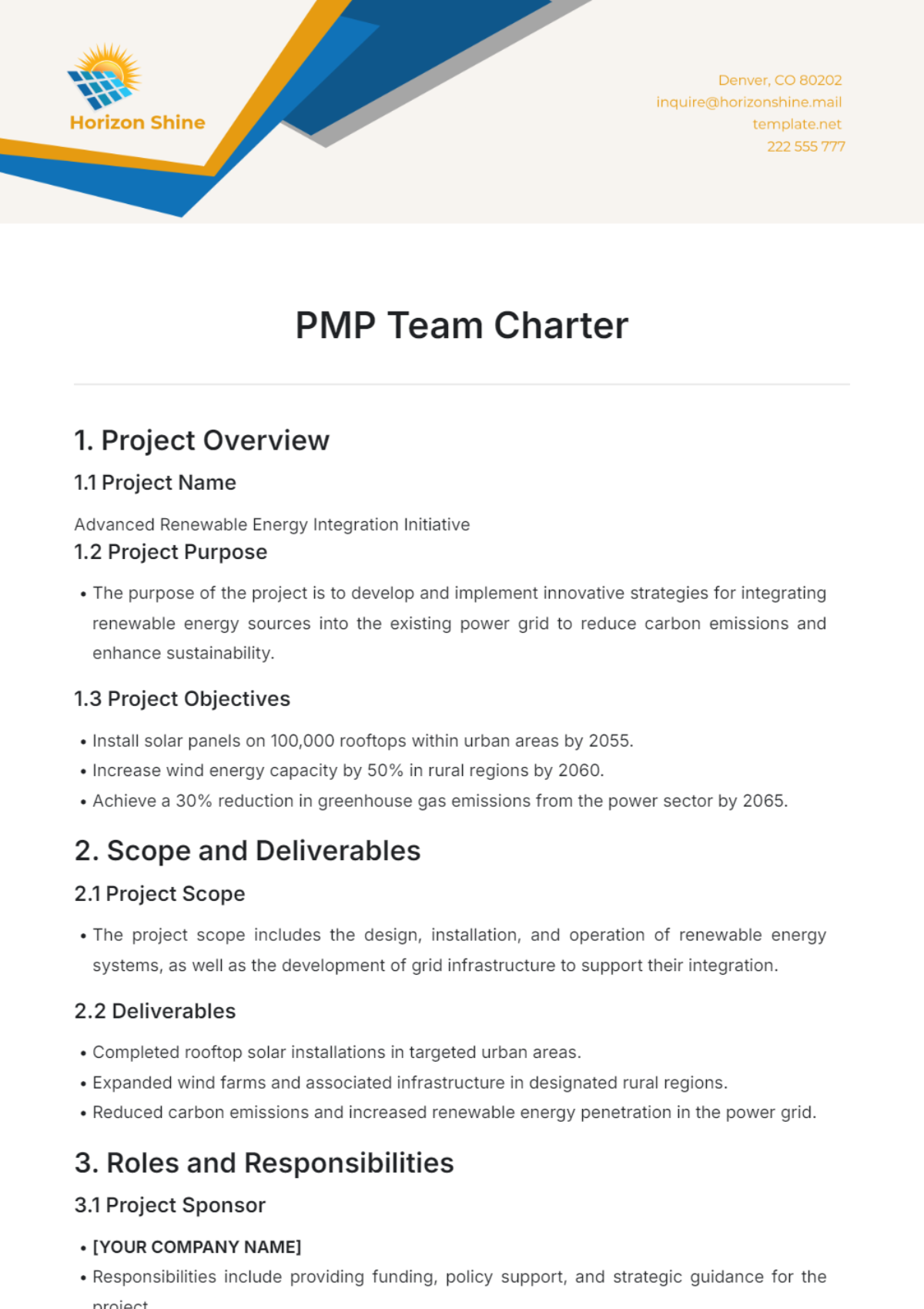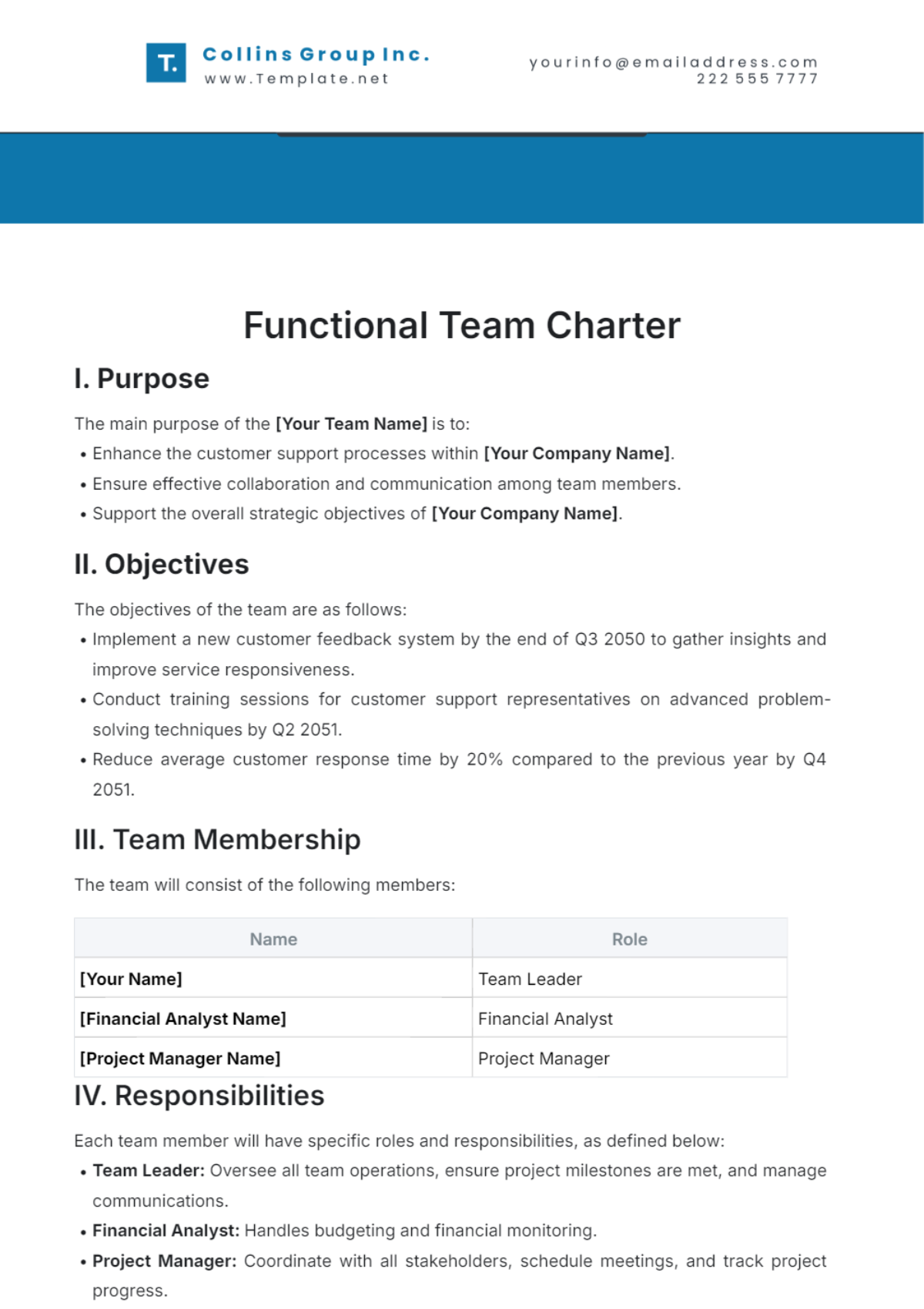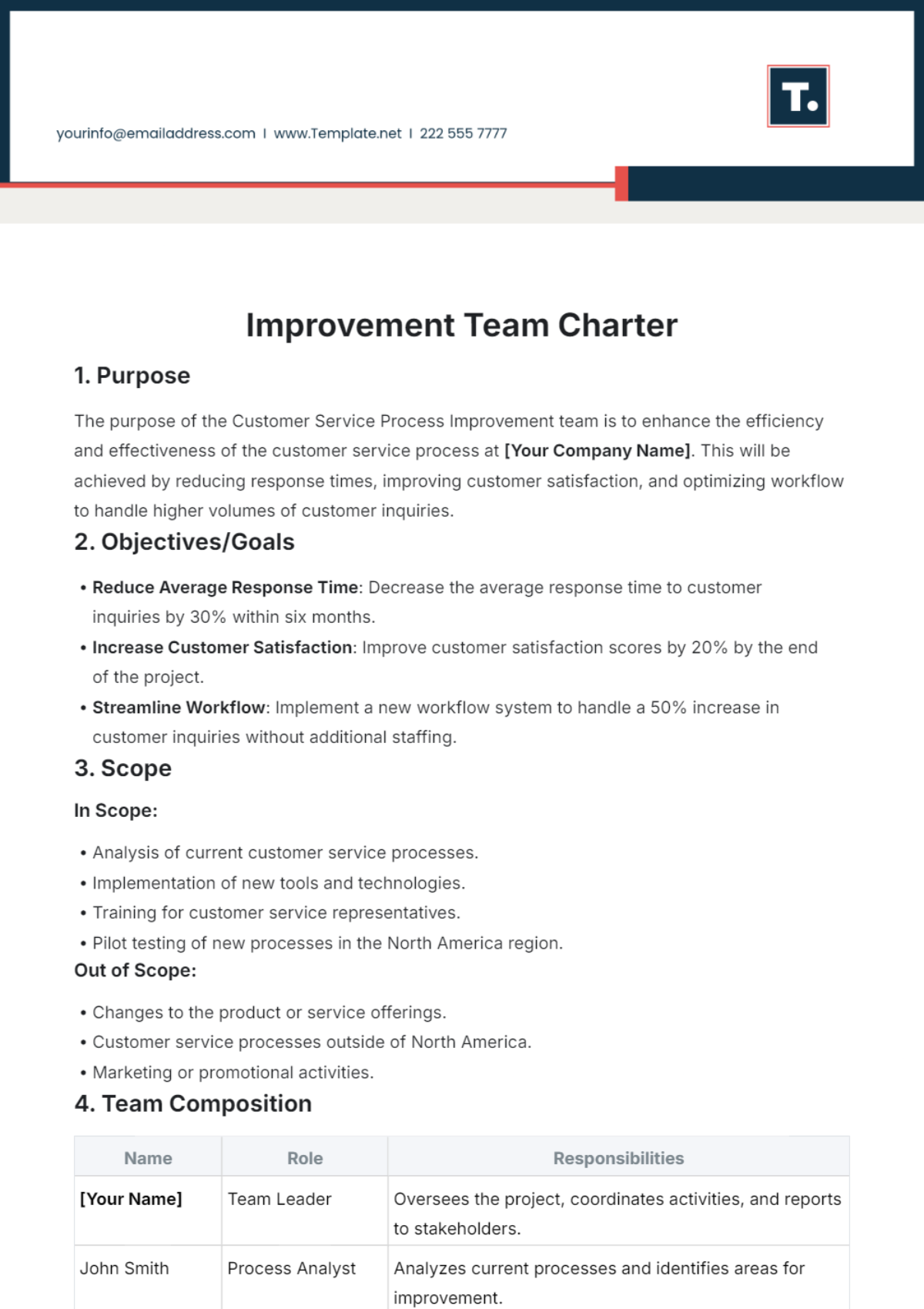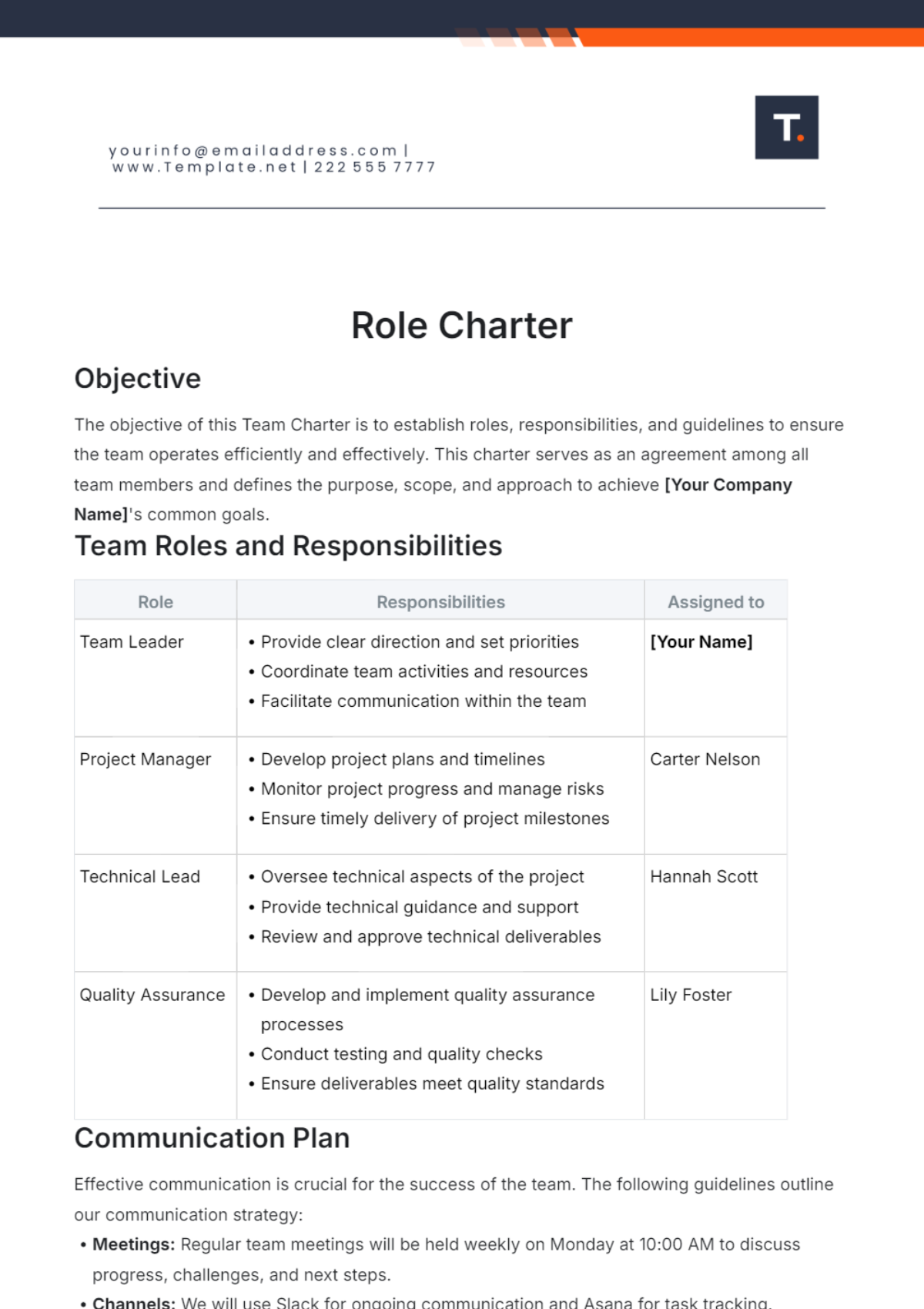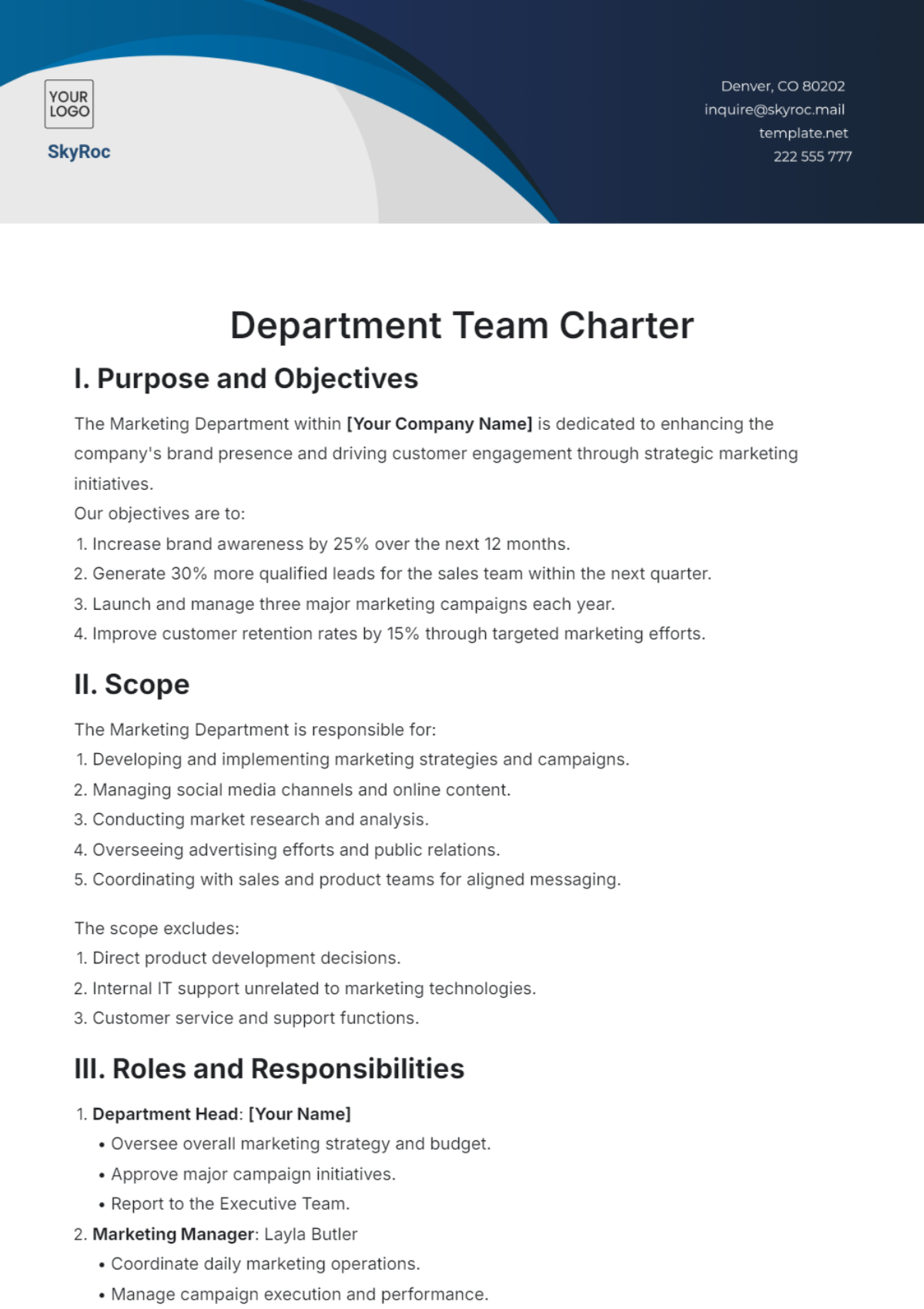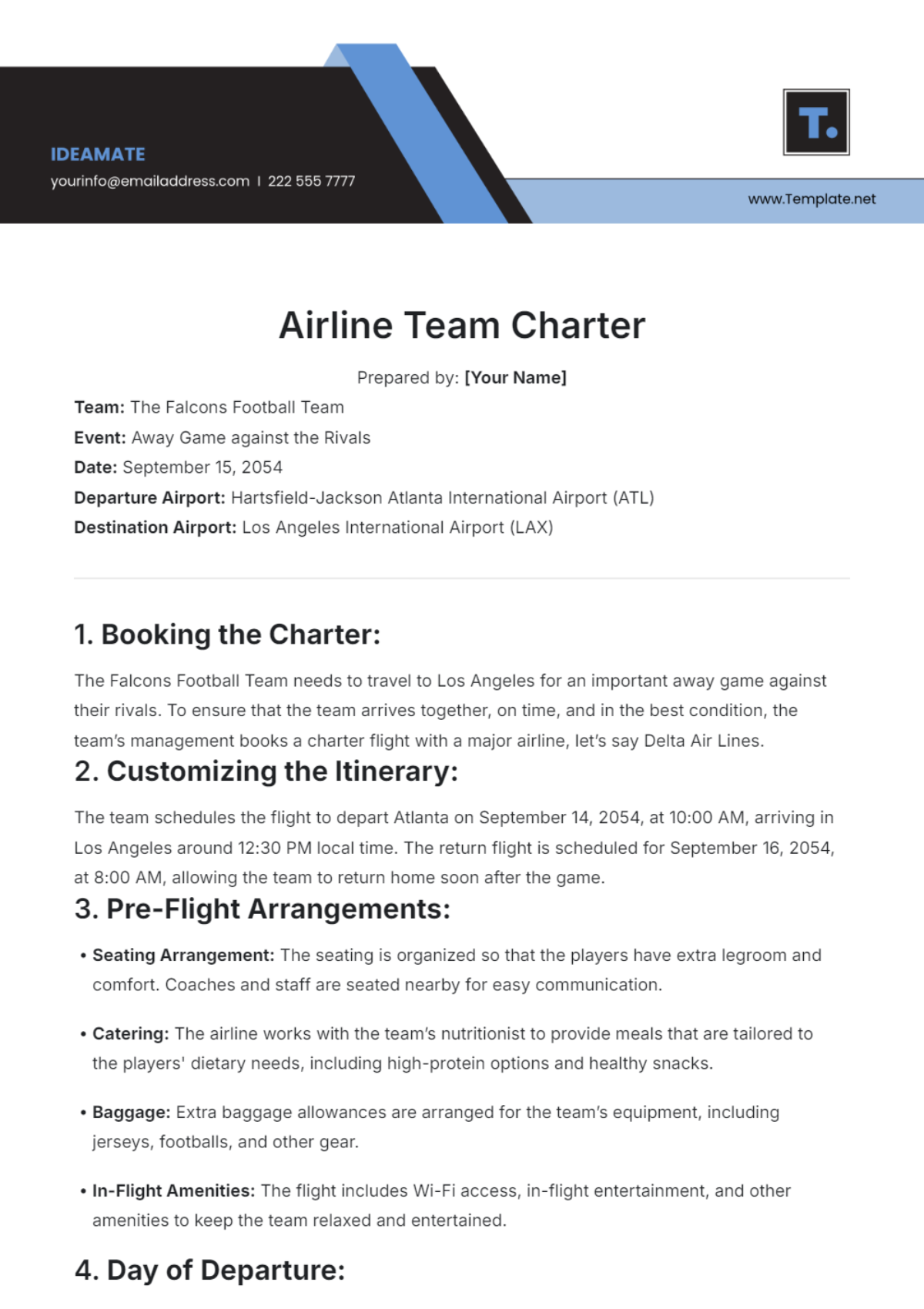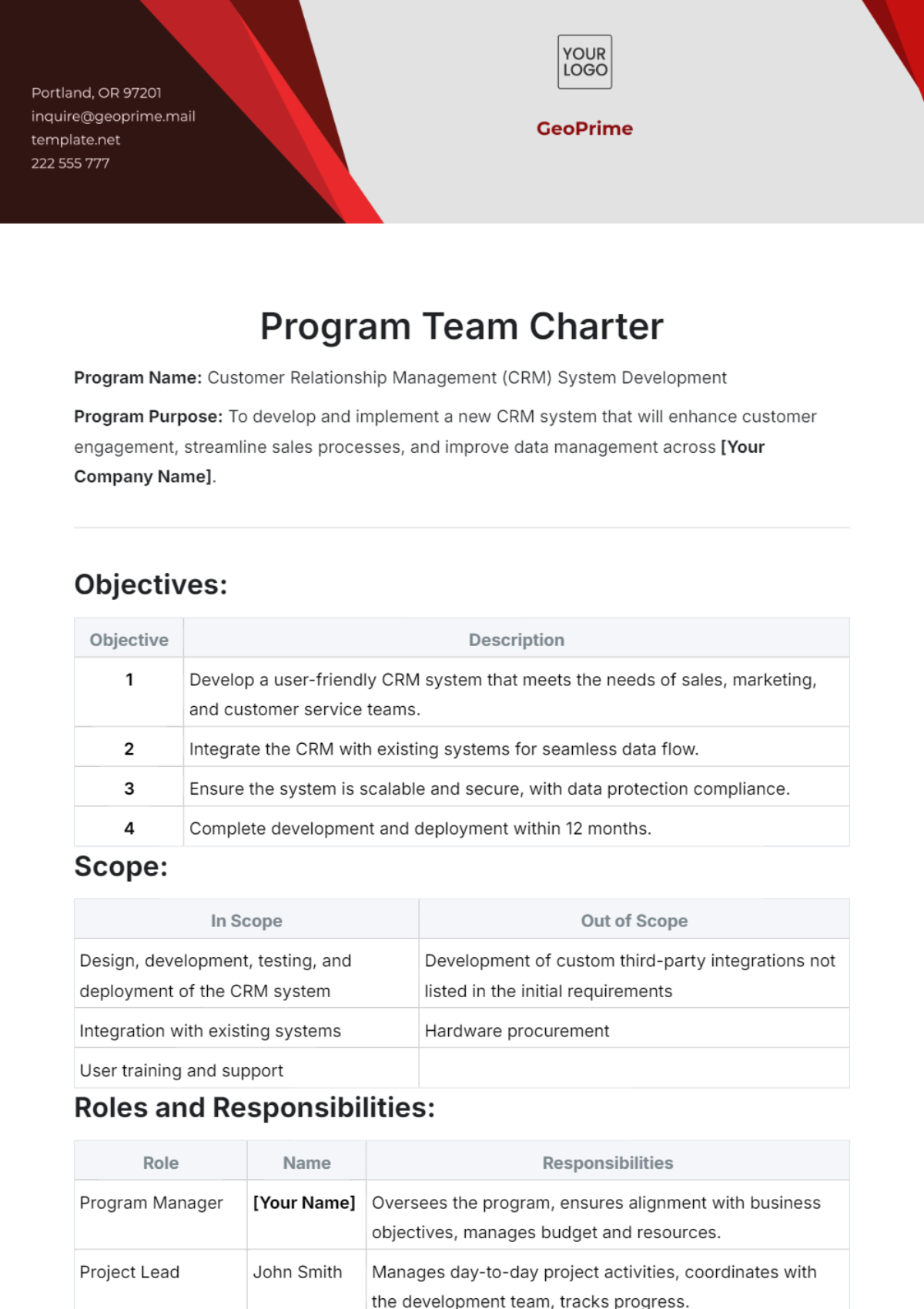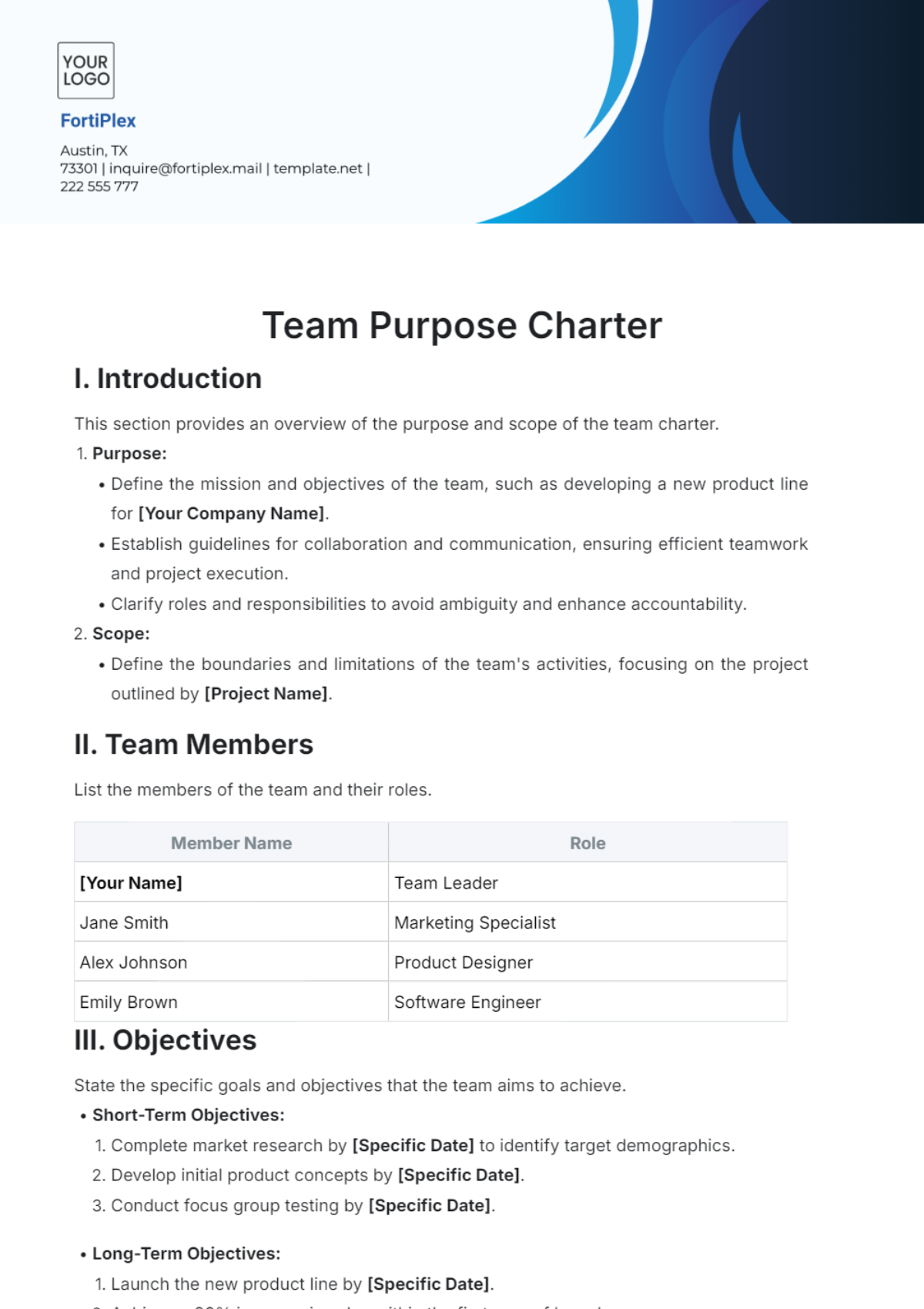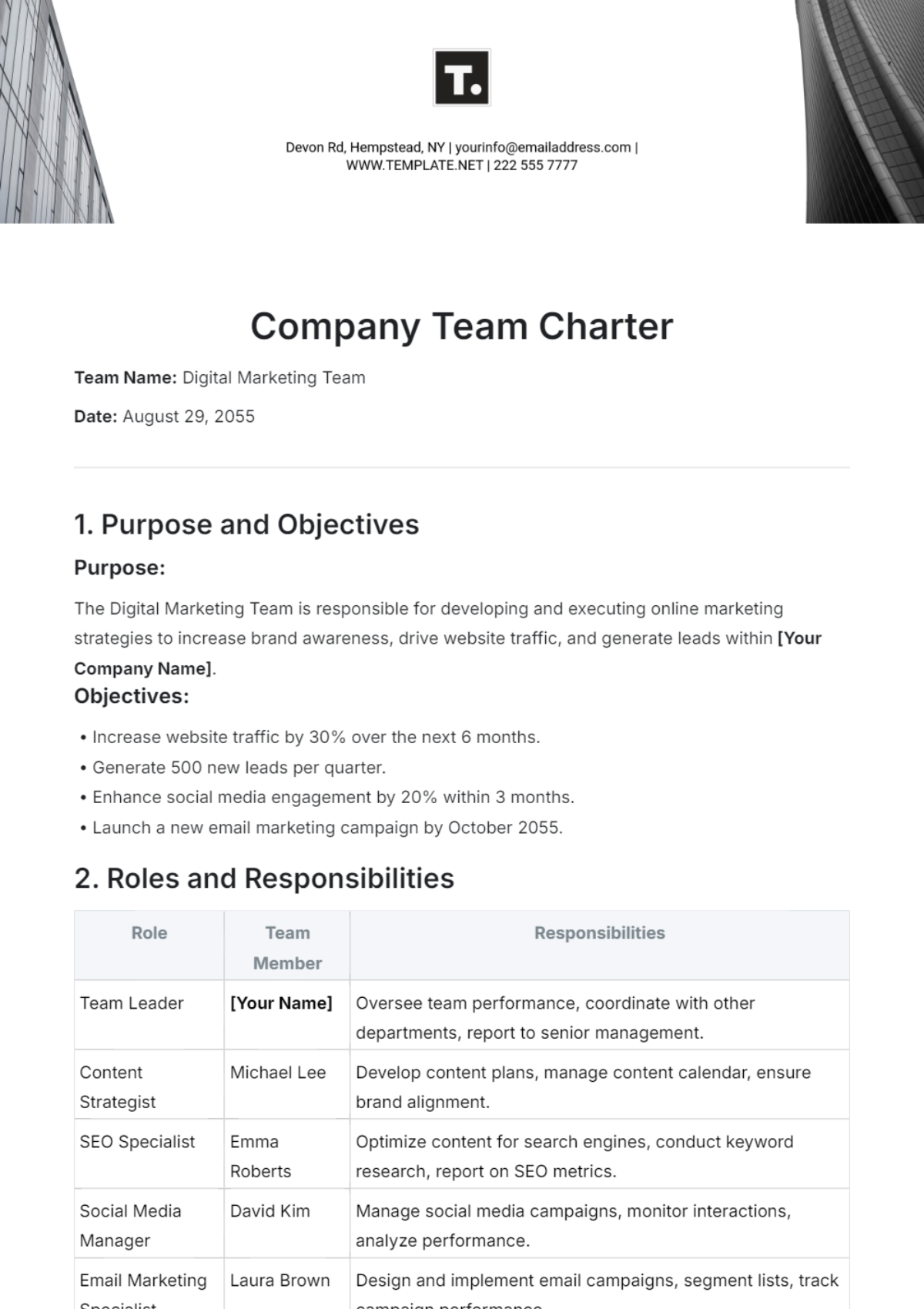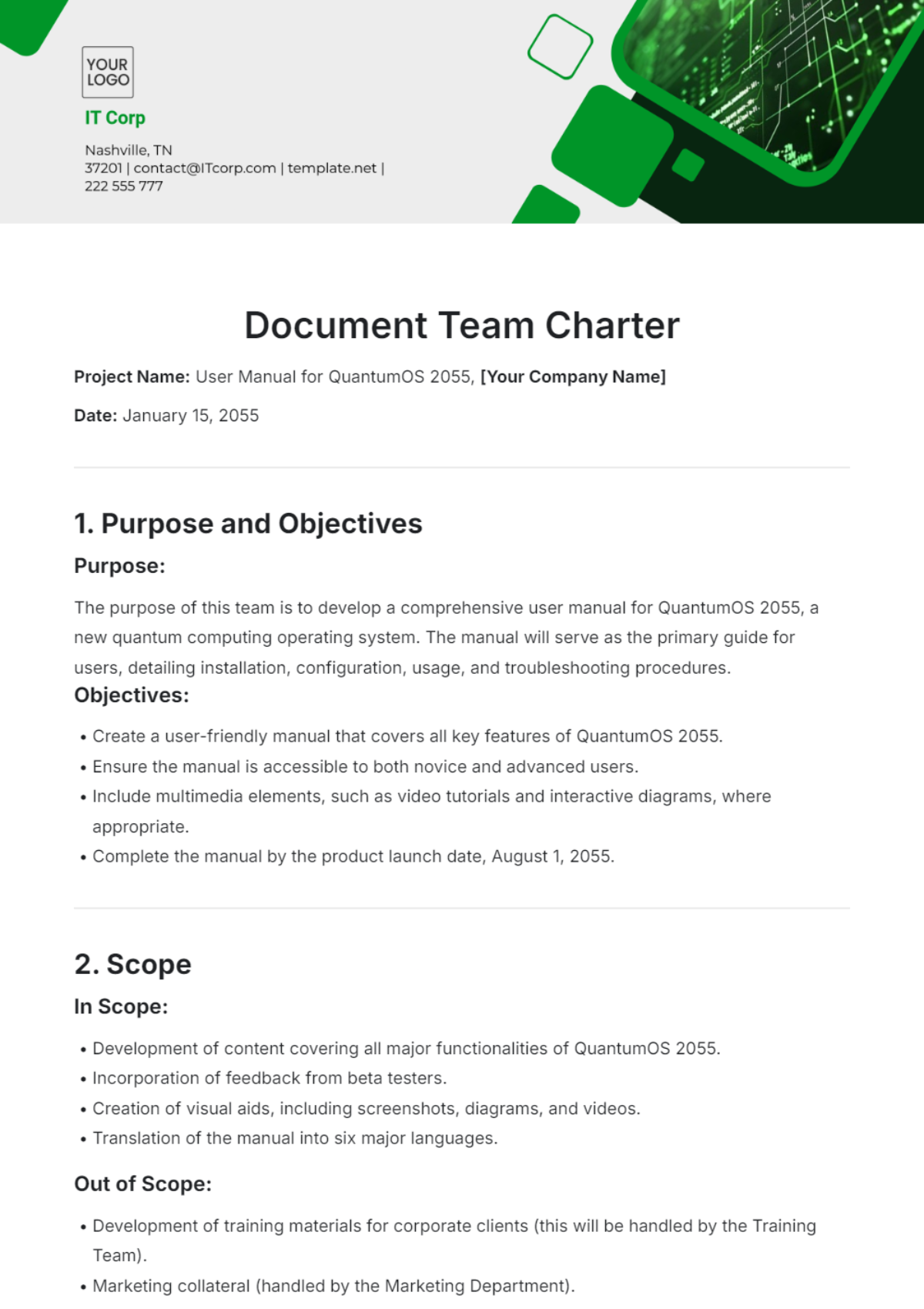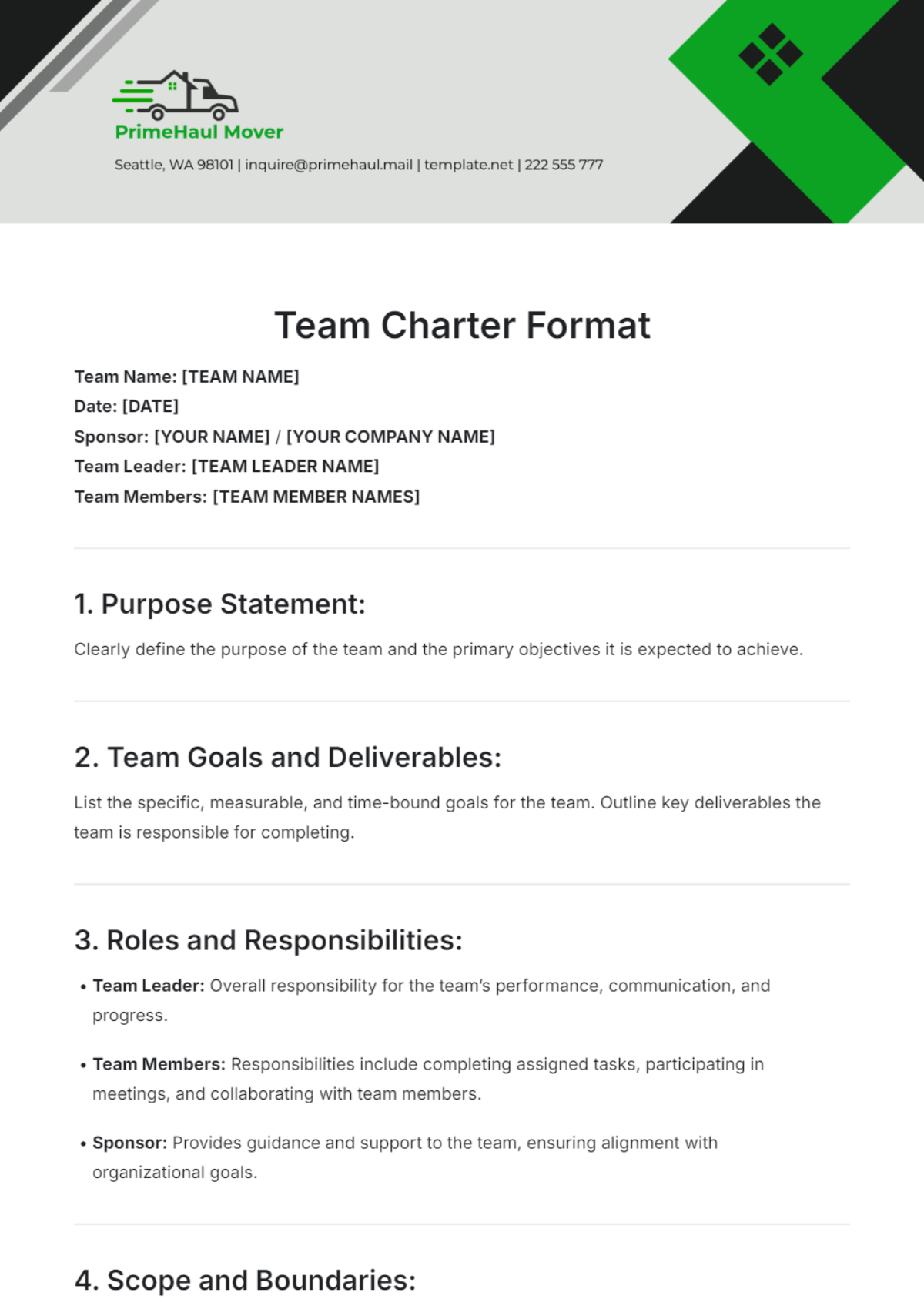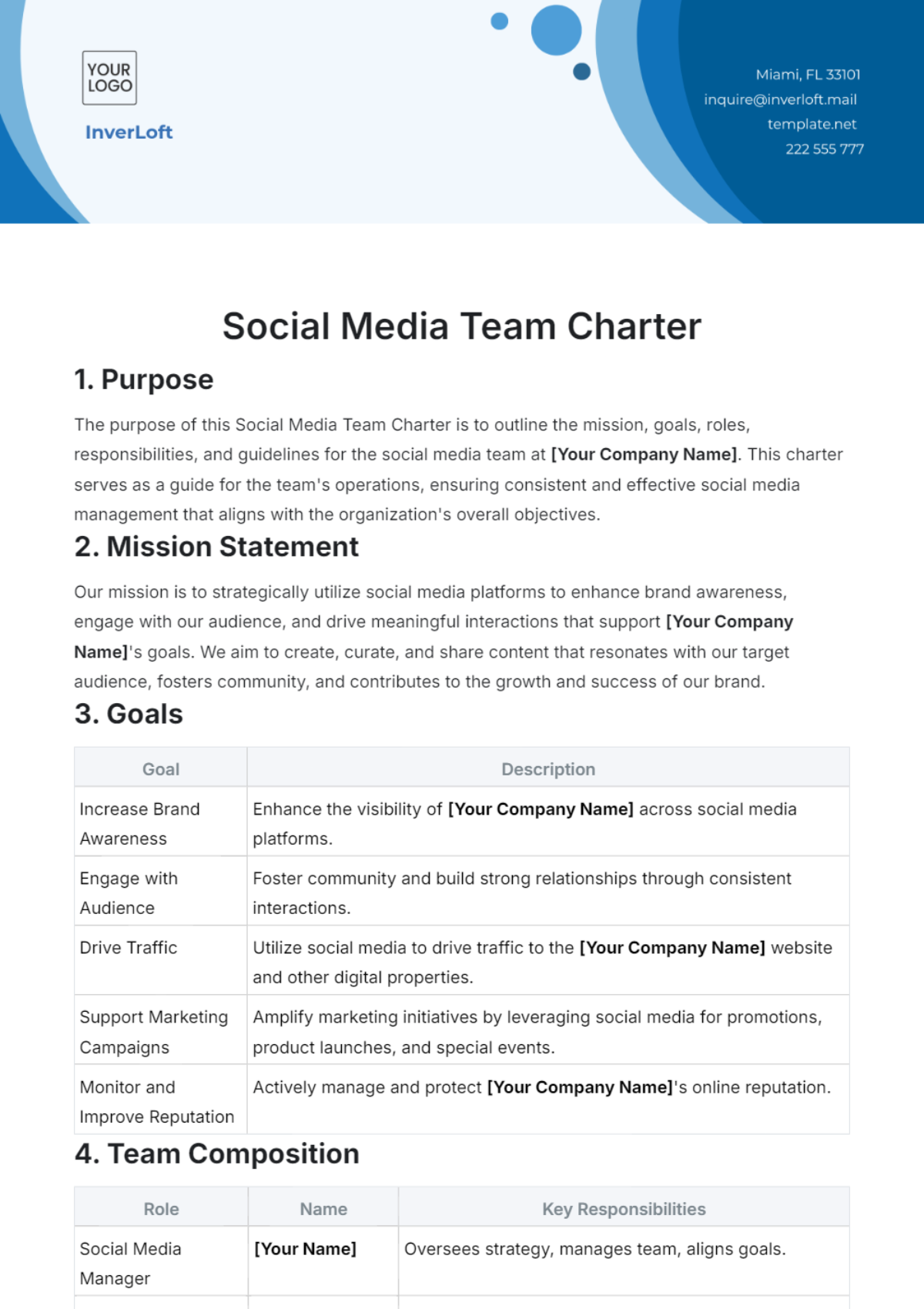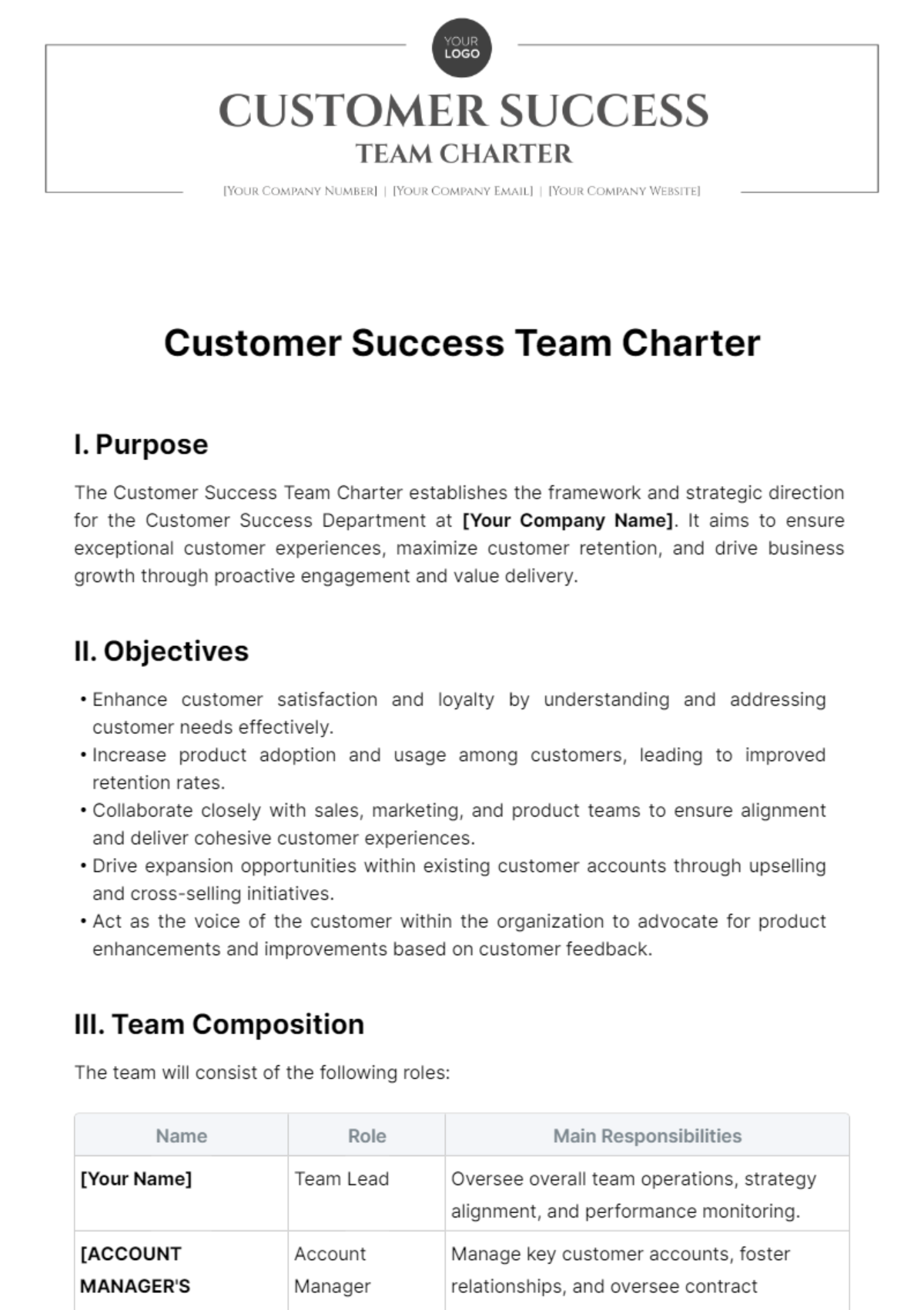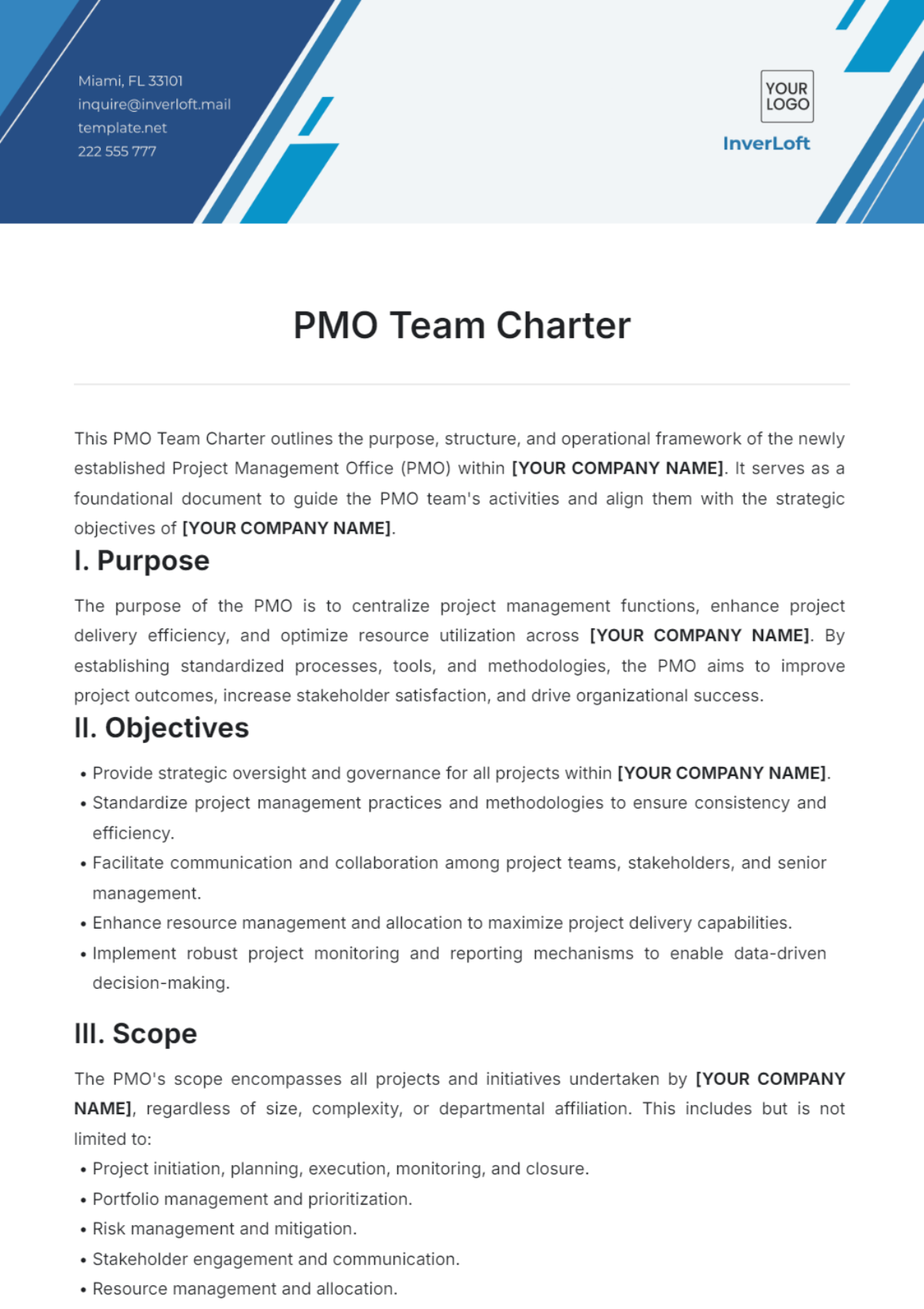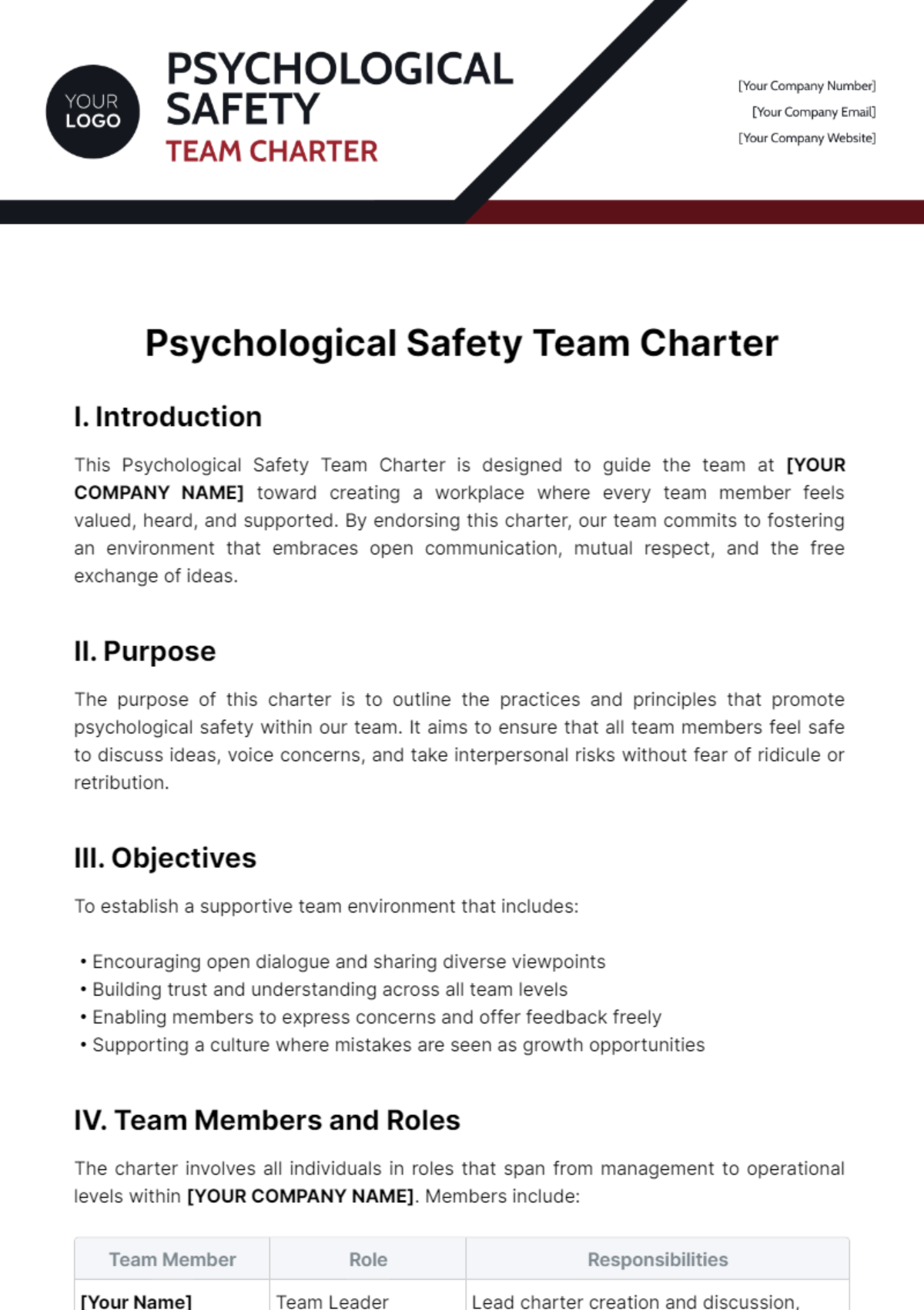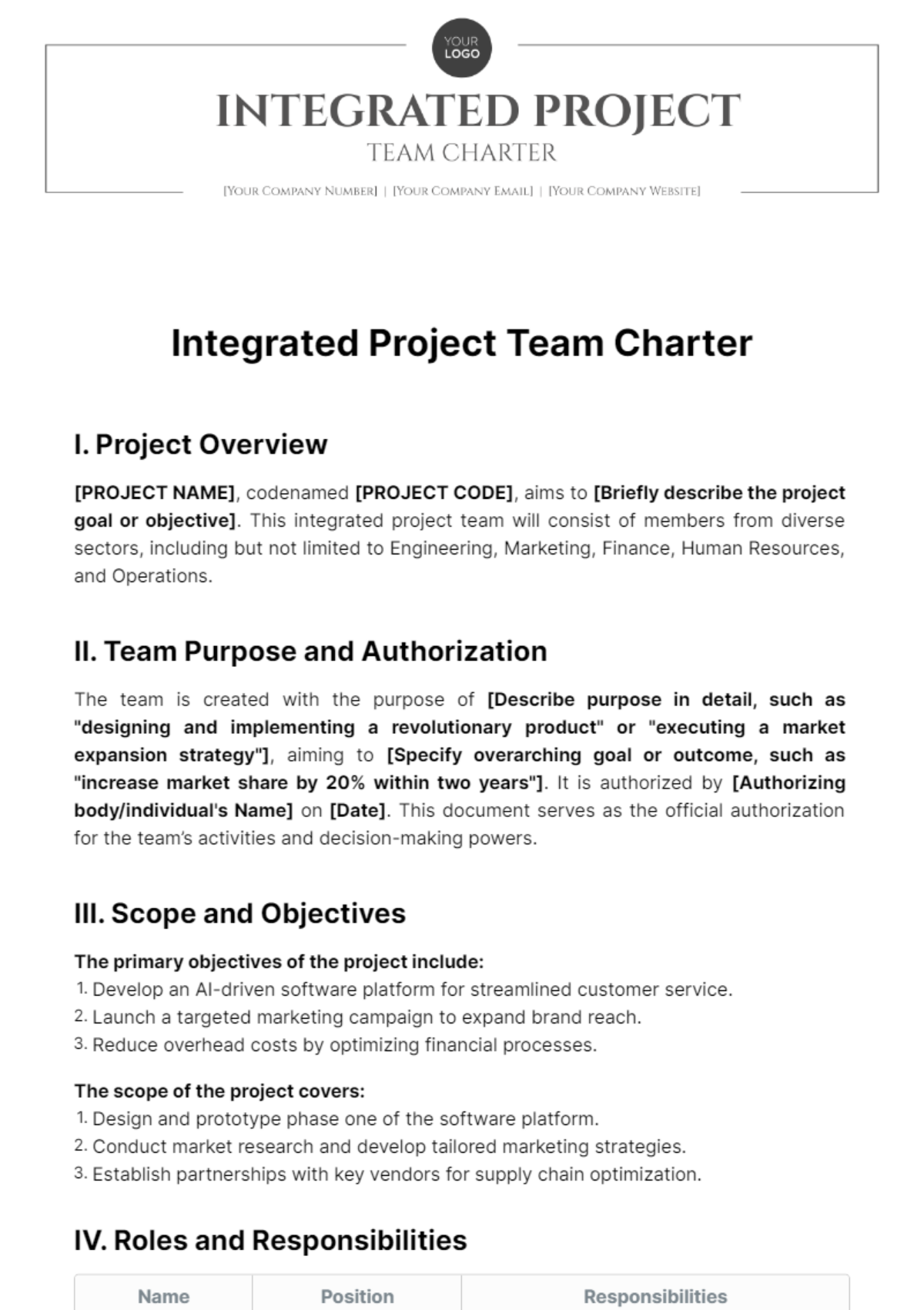Team Charter Structure
1. Team Mission
The mission of the Marketing Campaign Team at [Your Company Name] is to create, implement, and optimize marketing campaigns that effectively reach our target audience, enhance brand awareness, drive customer engagement, and achieve business growth objectives.
2. Key Roles
Role | Responsibility | Team Member |
|---|---|---|
Team Leader | Oversee the team's activities, ensure alignment with mission, and coordinate between departments | [Your Name] |
Marketing Strategist | Develop overall campaign strategies and ensure they align with the company’s goals | Jackson Lloyd |
Content Creator | Create content that aligns with the campaign’s objectives | Carter Nelson |
SEO Specialist | Optimize content to improve search engine rankings and visibility | Hannah Scott |
Social Media Manager | Manage social media channels and engage with the audience | Cameron Robinson |
Data Analyst | Analyze campaign performance data to inform future strategies | Lily Foster |
Designer | Create visual assets for the campaign | Lila Simmons |
3. Communication Strategies
Weekly Meetings: Scheduled every Monday at 10 AM to discuss ongoing projects, challenges, and progress.
Email Updates: Summaries of meetings and actionable items will be sent via email.
Internal Chat: Use a designated channel for real-time communication and quick updates (e.g., Slack, Microsoft Teams).
Shared Documents: Use cloud-based document sharing for collaborative working (e.g., Google Drive, SharePoint).
4. Success Metrics
Campaign Reach: Number of unique individuals reached by the campaign
Engagement Rate: Likes, shares, comments, and other interaction metrics
Conversion Rate: Percentage of audience that takes the desired action
ROI: Return on investment from the campaign spends
Brand Awareness: Increase in brand recognition and recall
5. Approach to Managing Deadlines and Resource Allocation
Milestone Setting: Define and communicate clear milestones for campaign deliverables.
Task Allocation: Assign tasks based on individual roles and their capacity.
Resource Tracking: Utilize project management tools to keep track of resource allocation and deadlines (e.g., Asana, Trello).
Periodic Reviews: Conduct periodic reviews to ensure deadlines are being met and reallocate resources as necessary.
Buffer Times: Include buffer periods in planning to accommodate unforeseen delays.
6. Signatures & Approvals
Name | Title | Signature | Date |
|---|---|---|---|
[Your Name] | Team Leader |
| [Date] |
Jackson Lloyd | Marketing Strategist |
| [Date] |
Carter Nelson | Content Creator |
| [Date] |
Hannah Scott | SEO Specialist |
| [Date] |
Cameron Robinson | Social Media Manager |
| [Date] |
Lily Foster | Data Analyst |
| [Date] |
Lila Simmons | Designer |
| [Date] |

